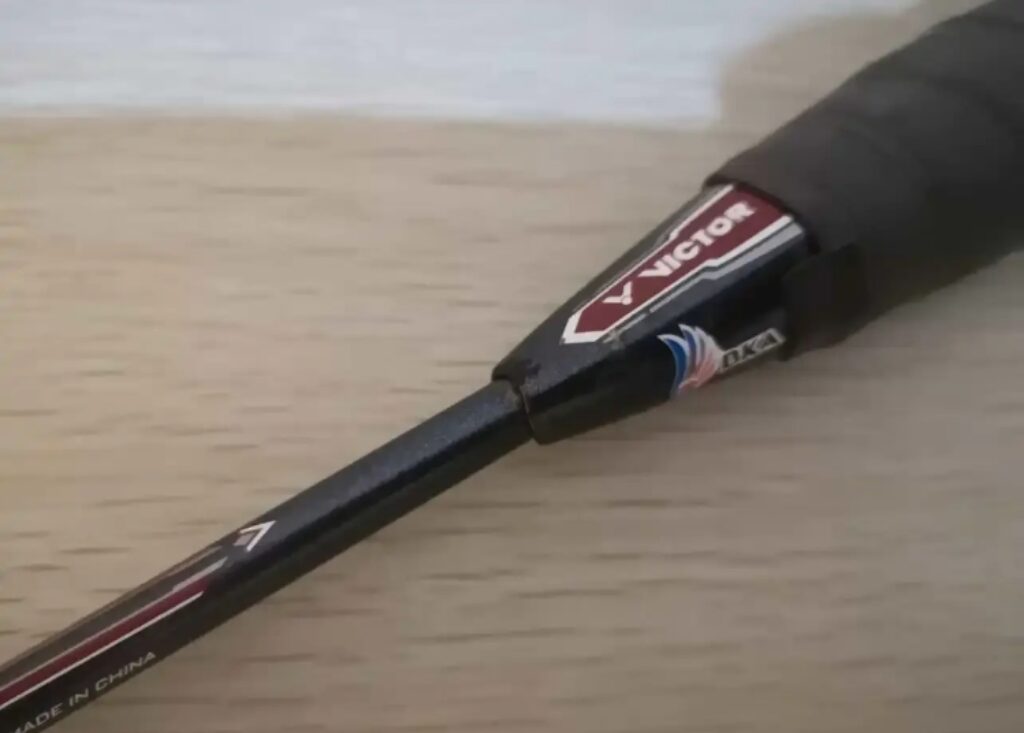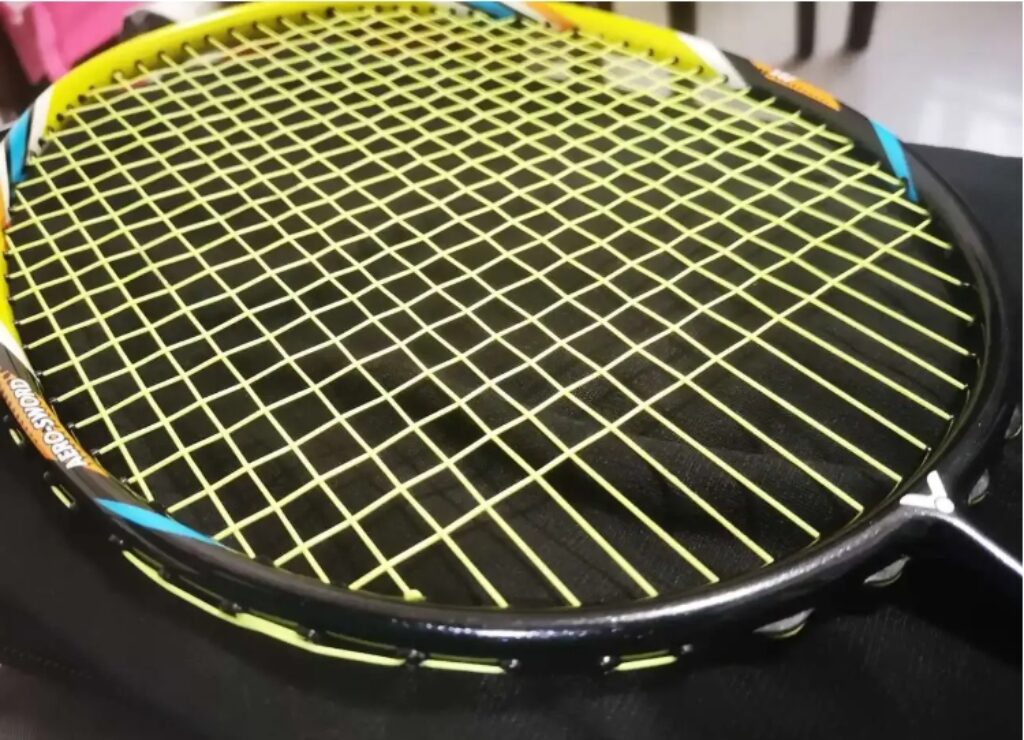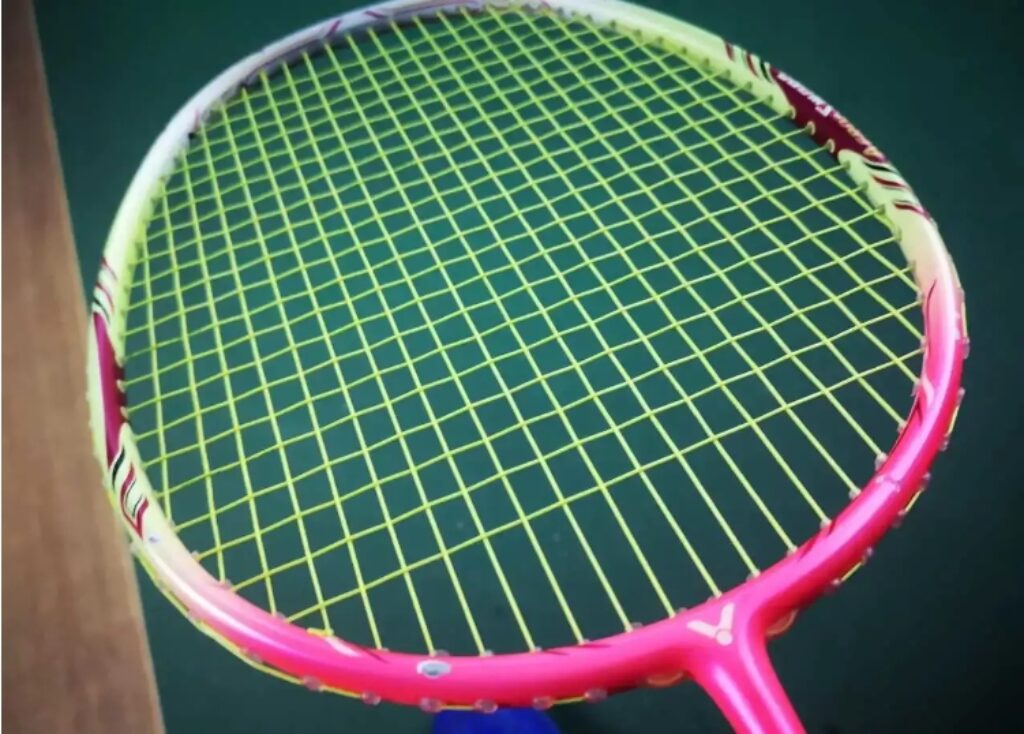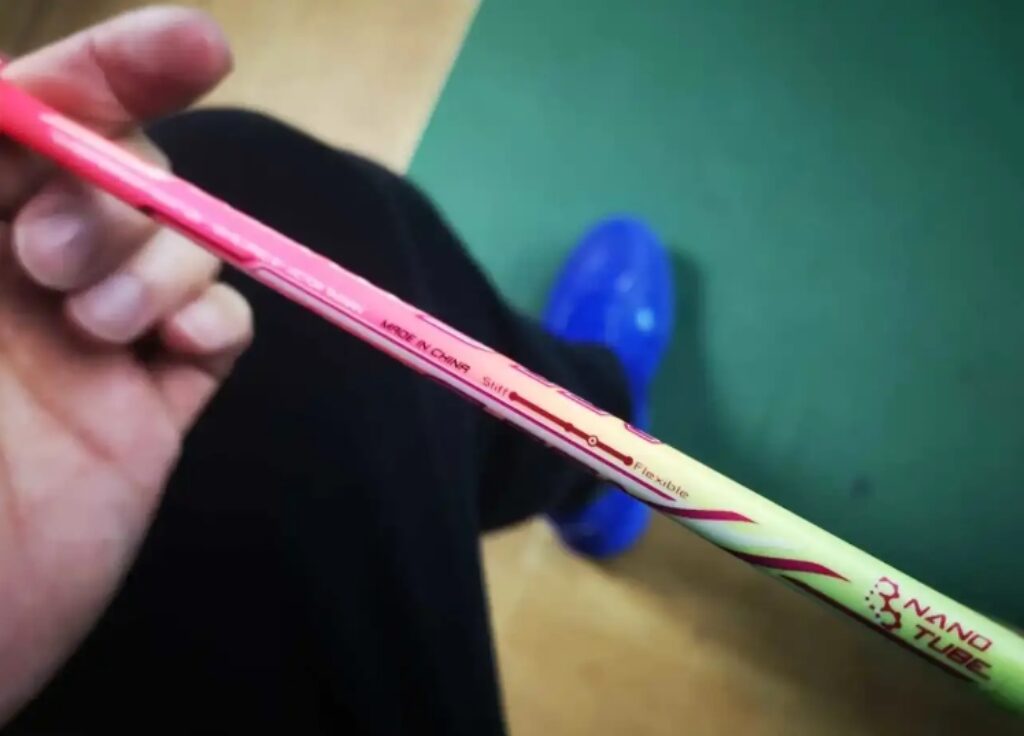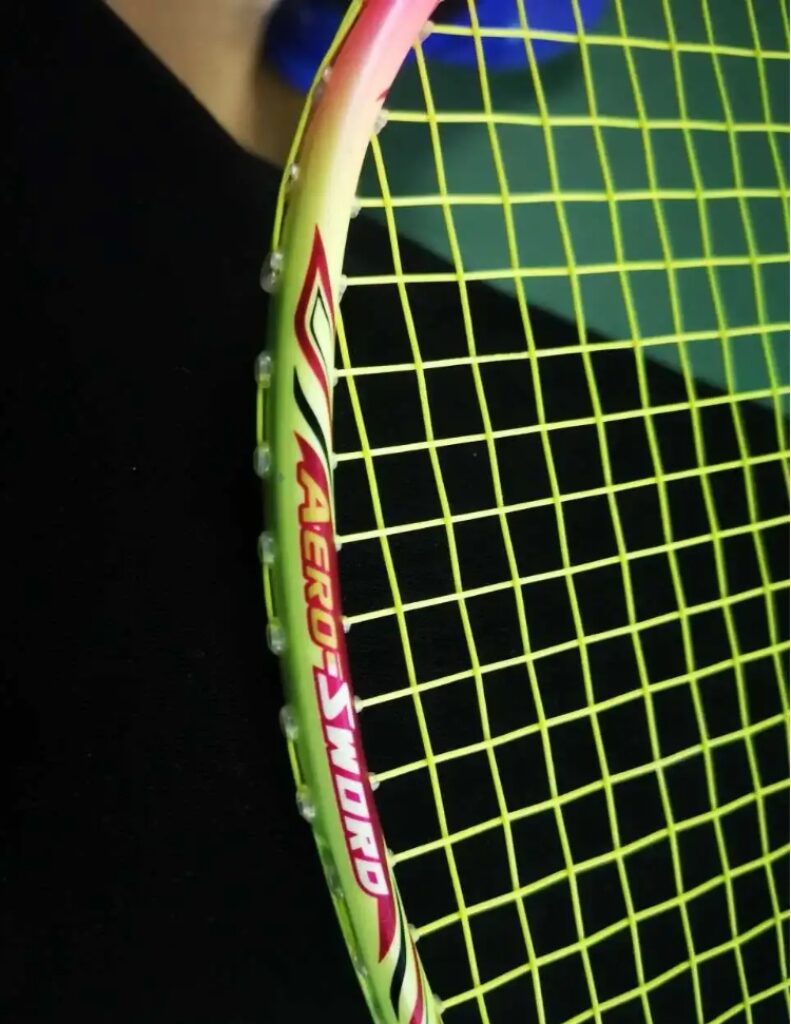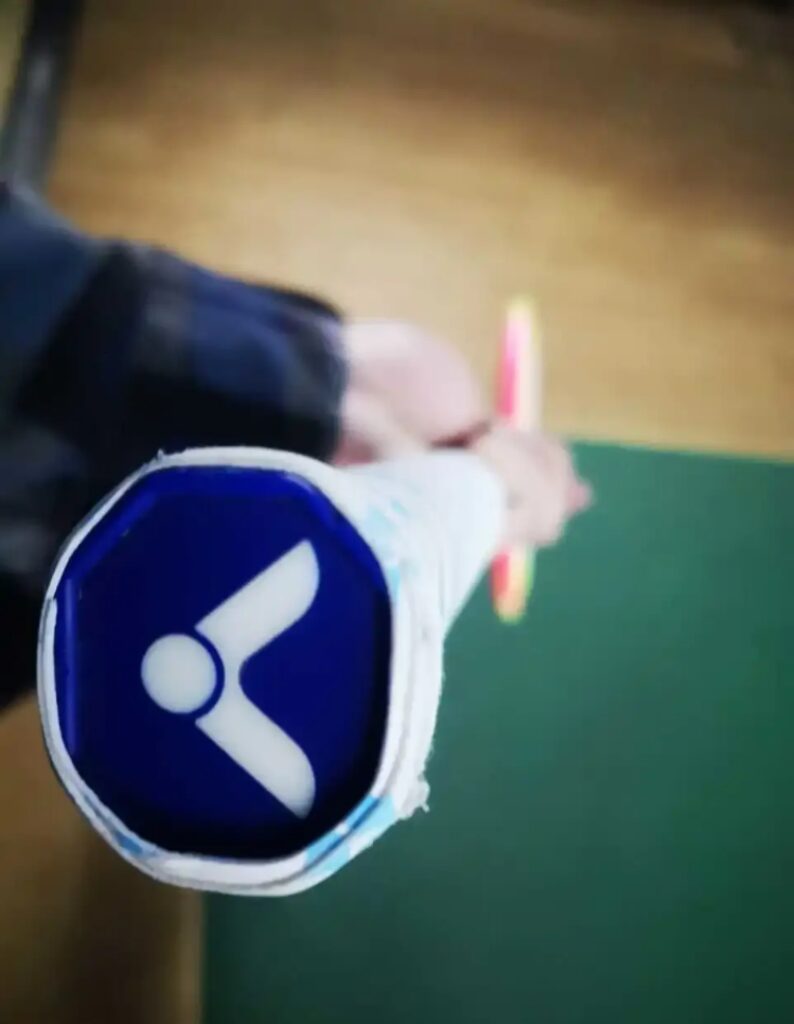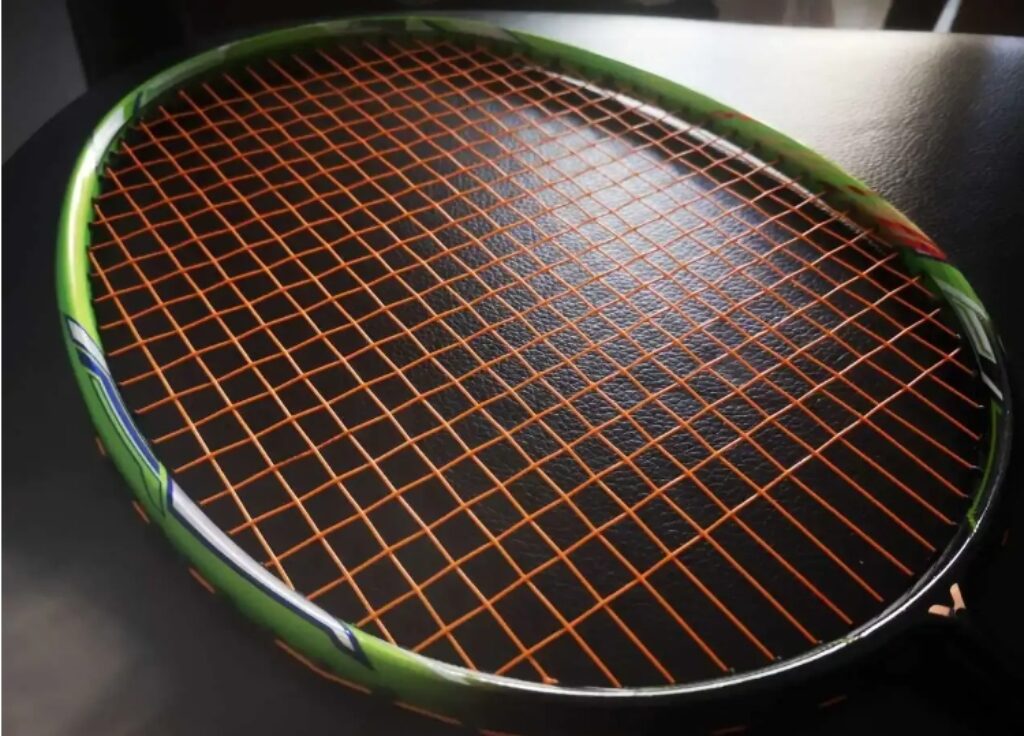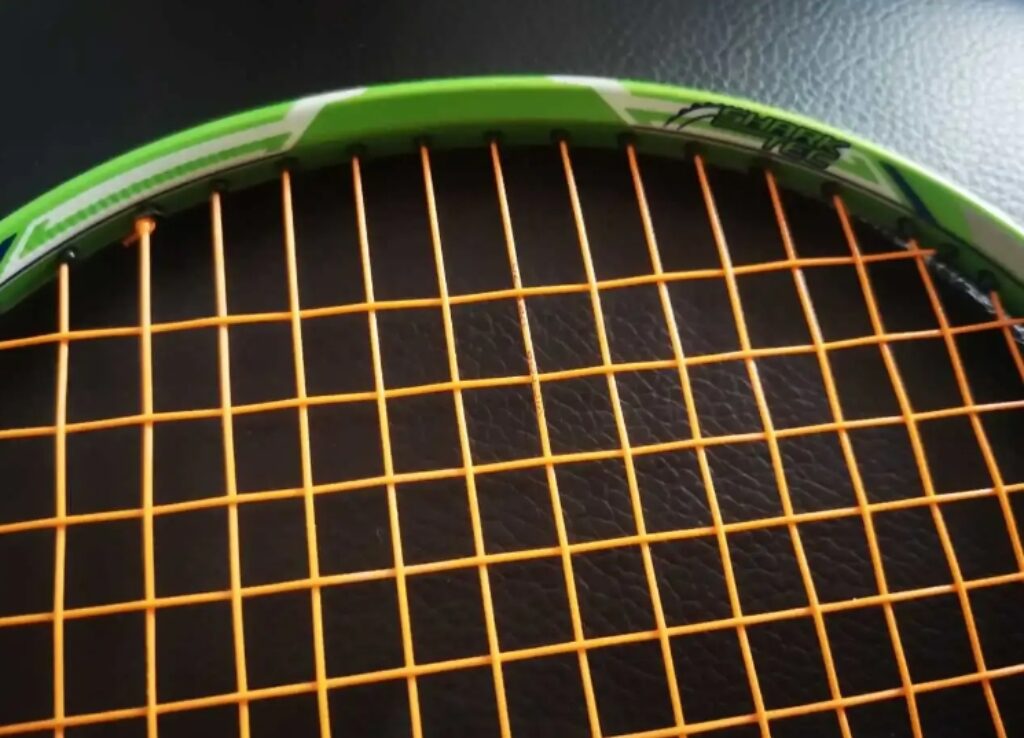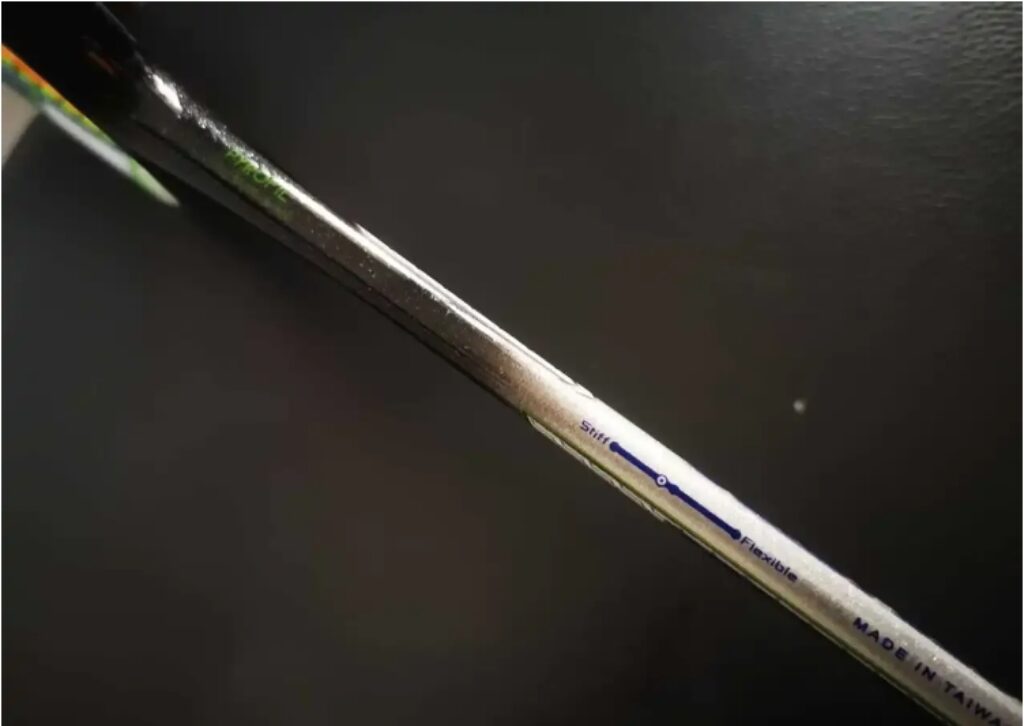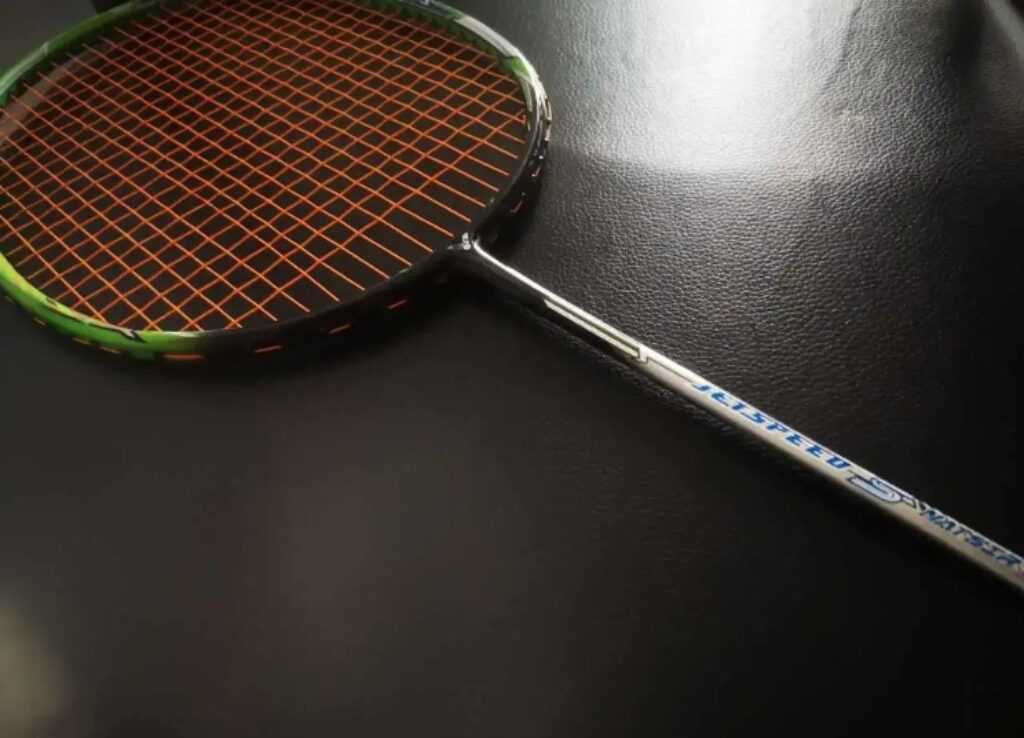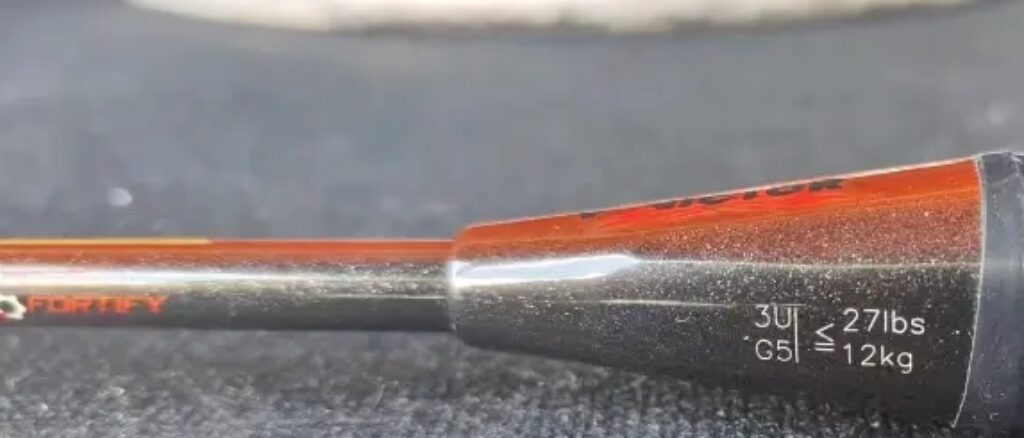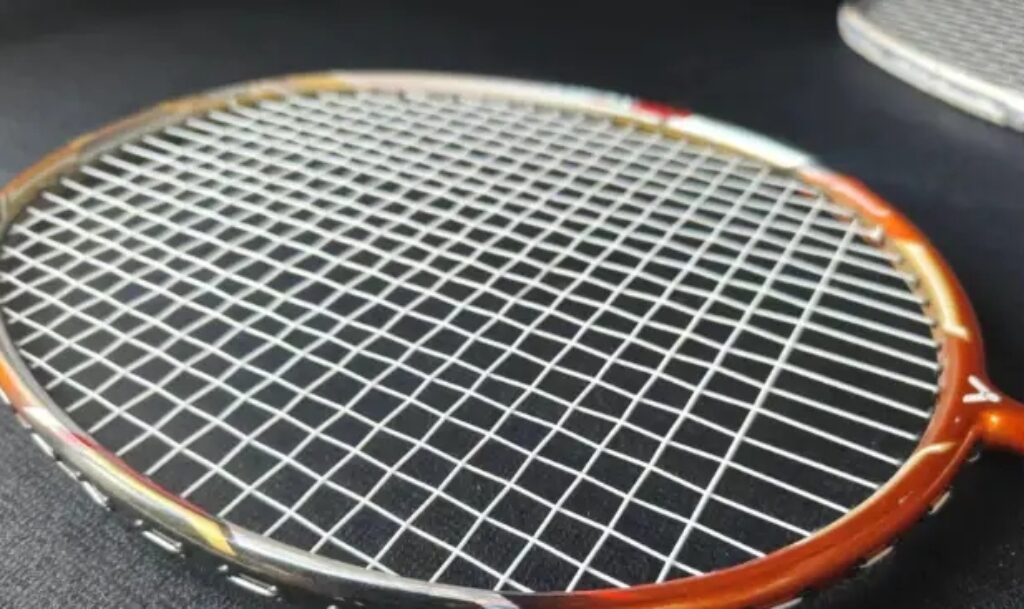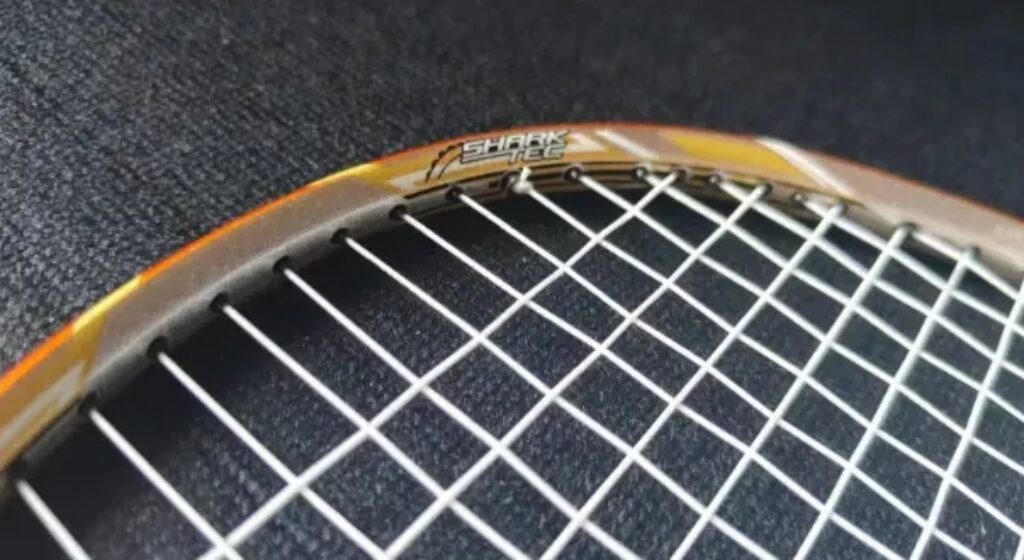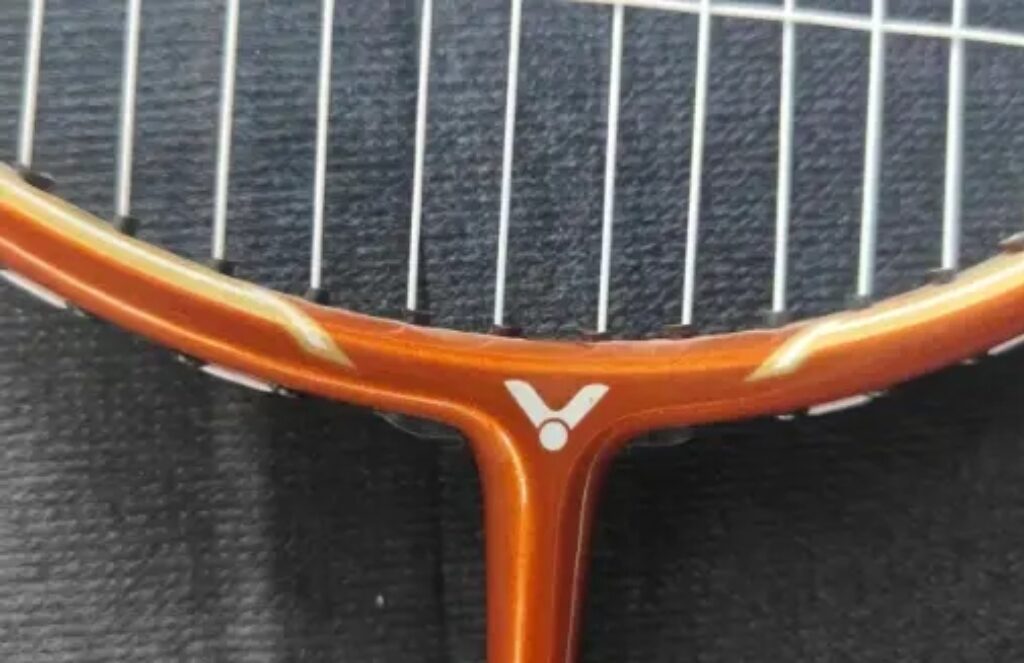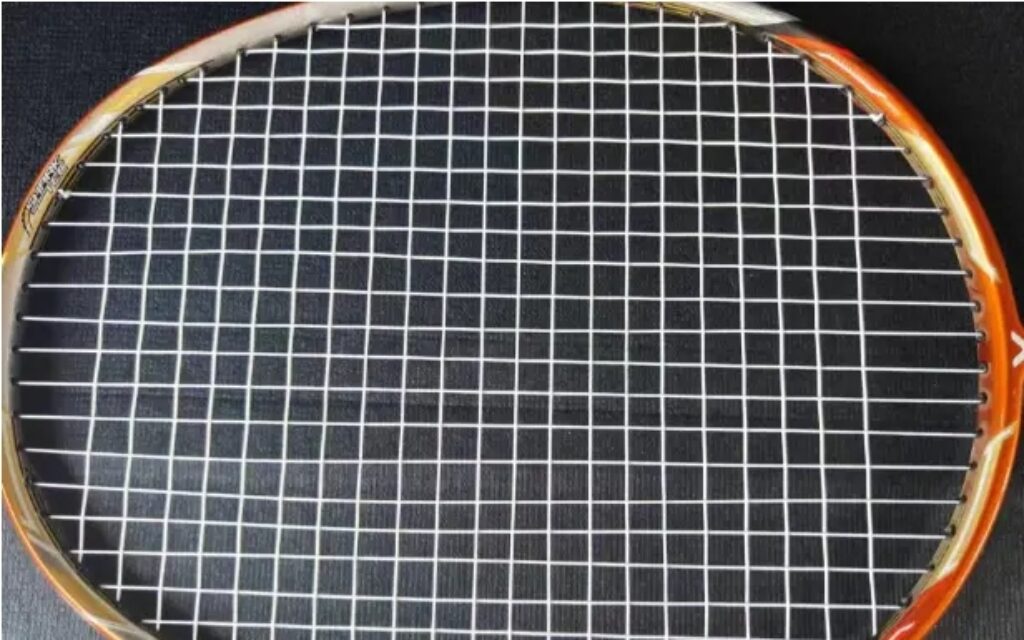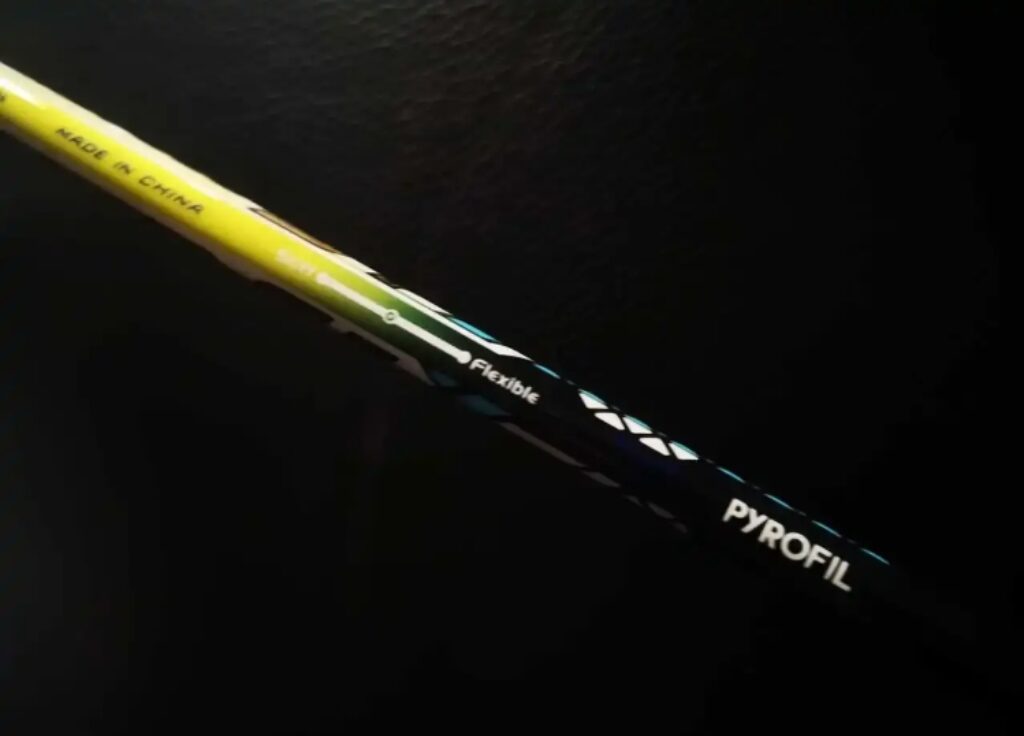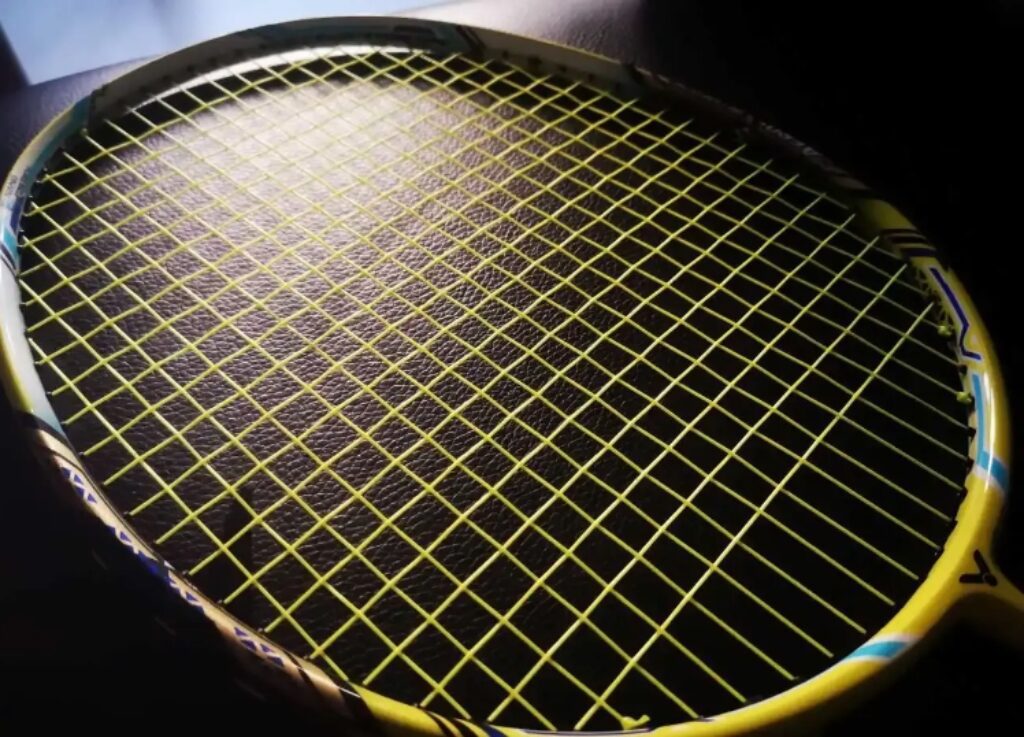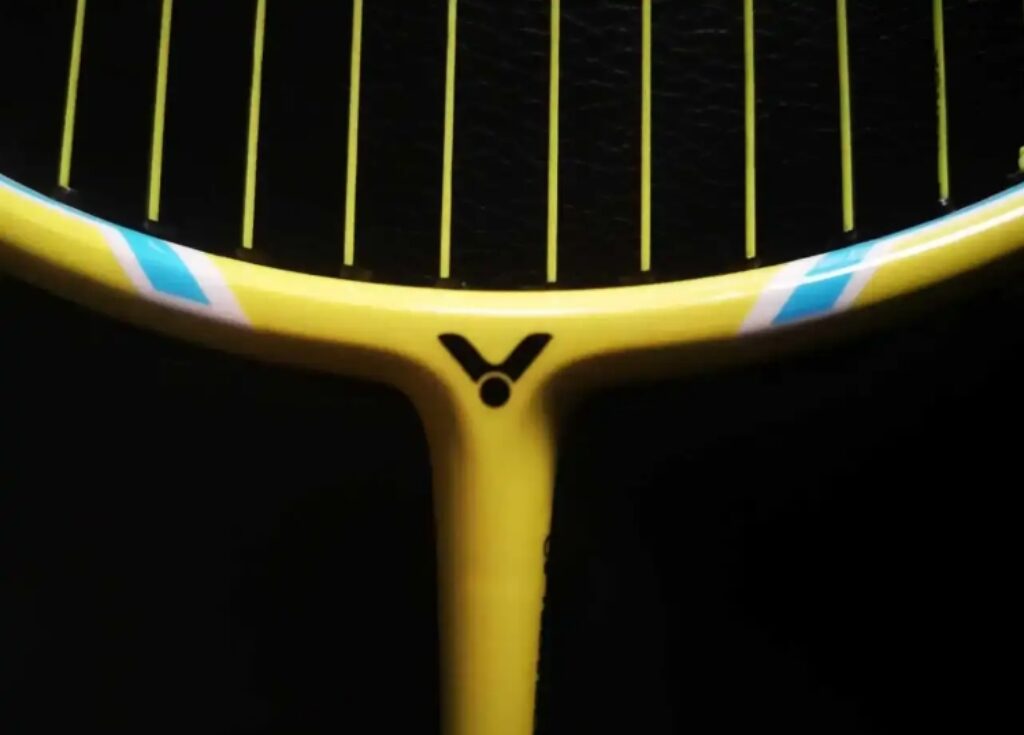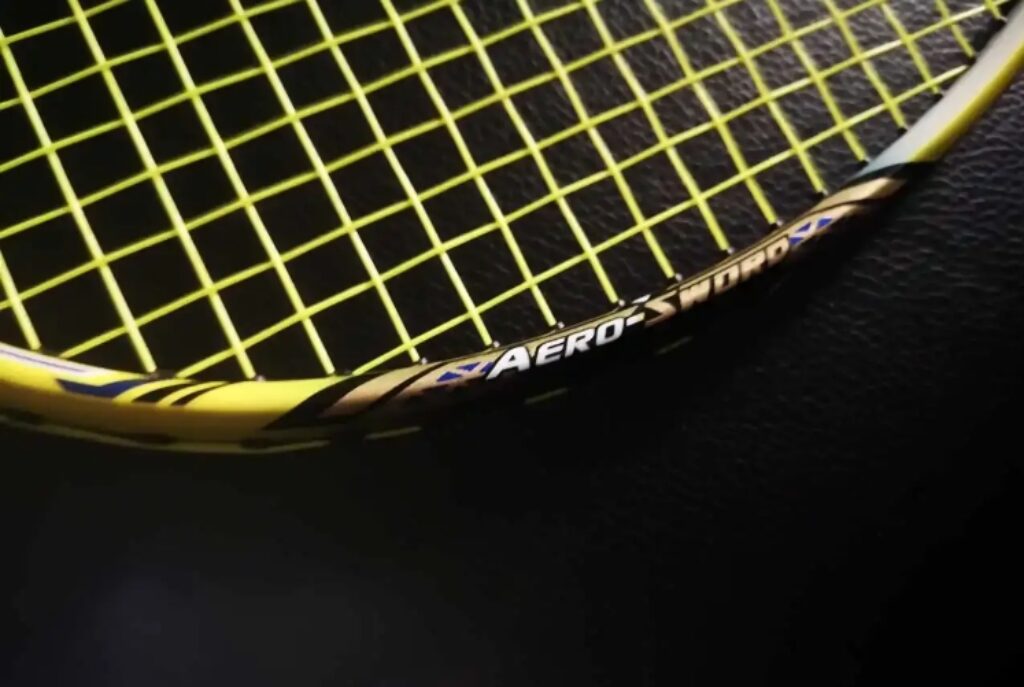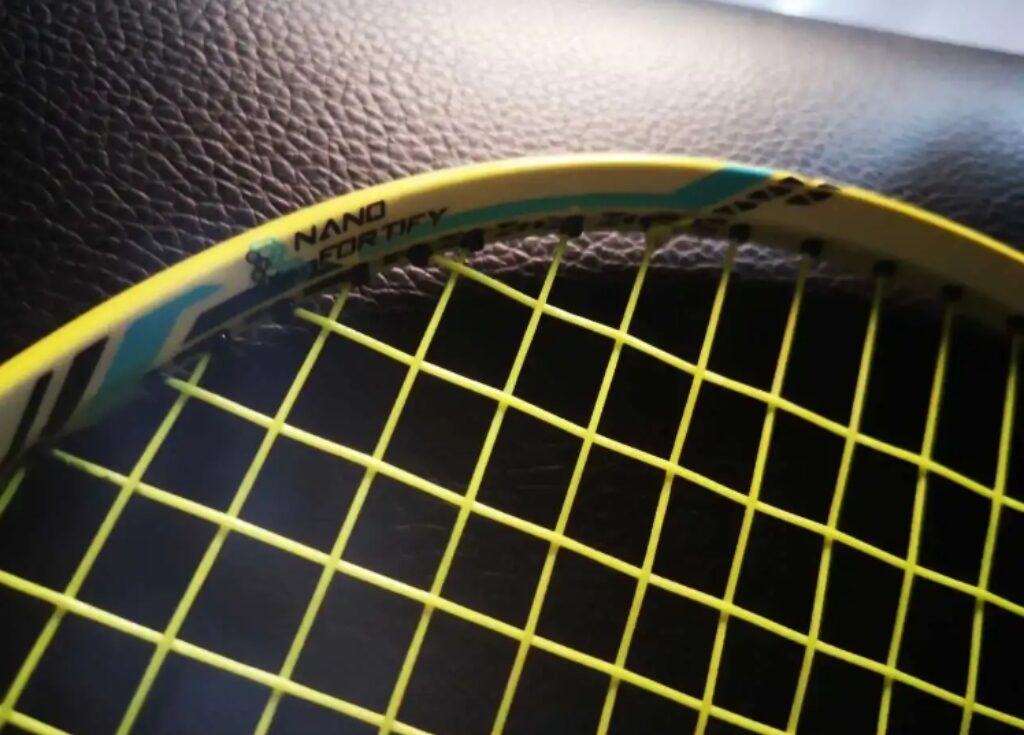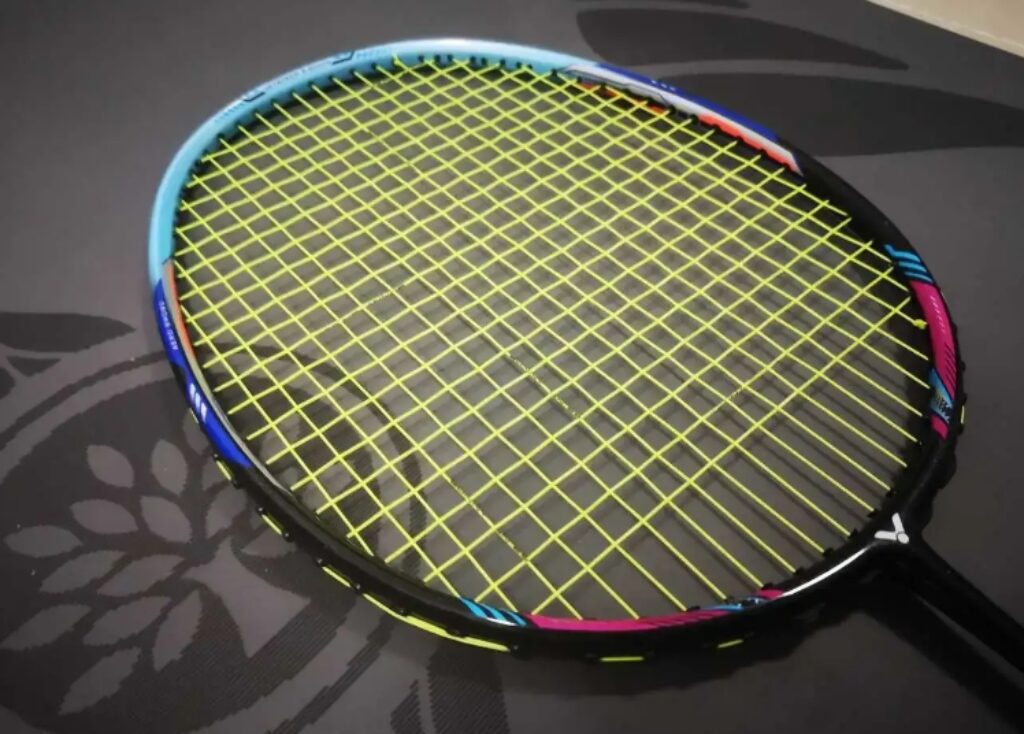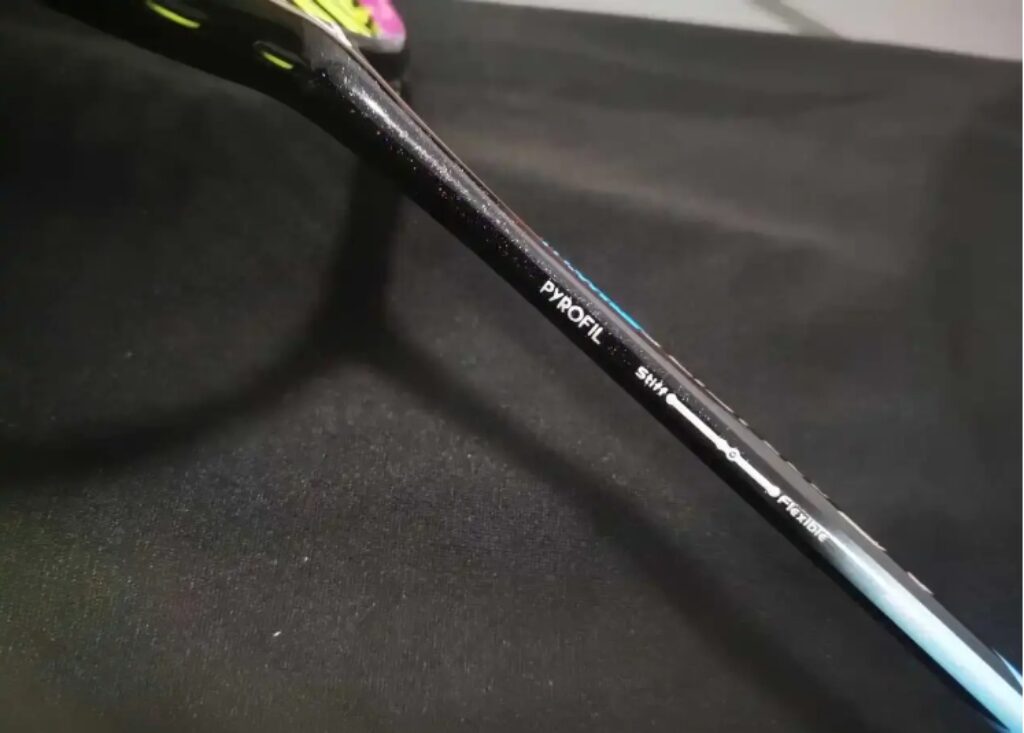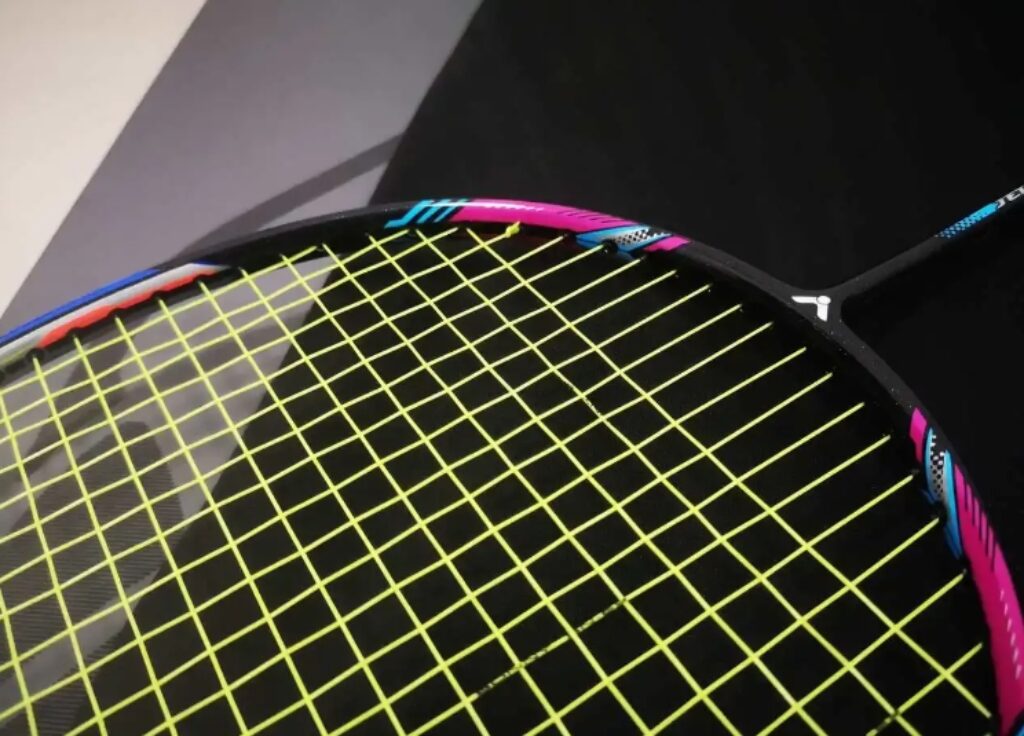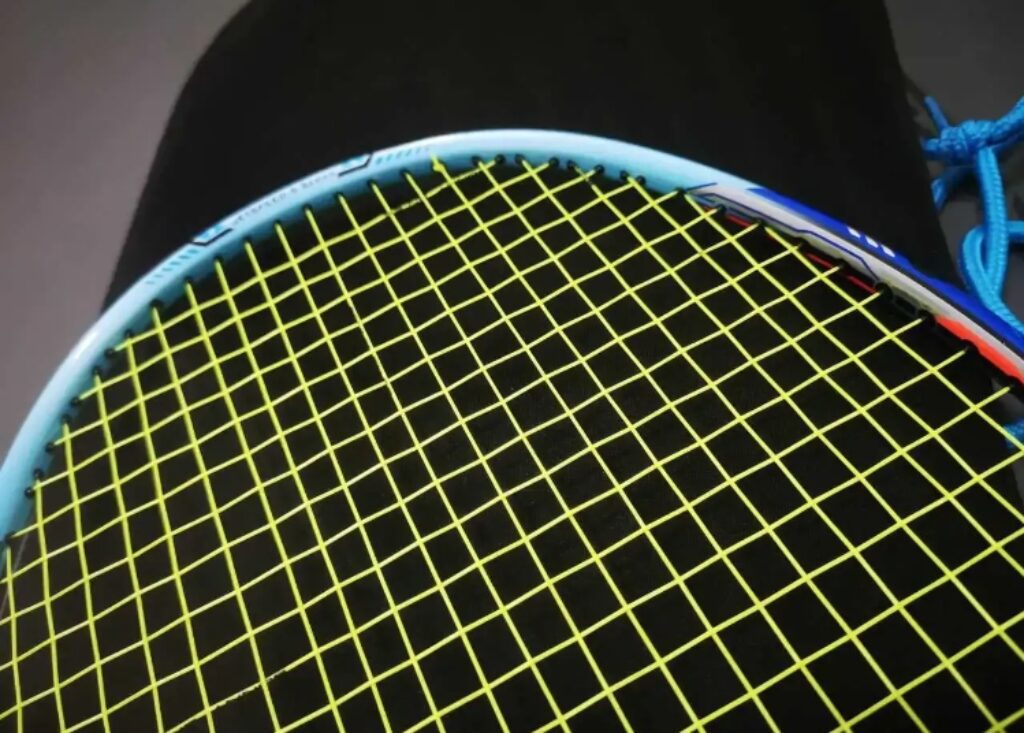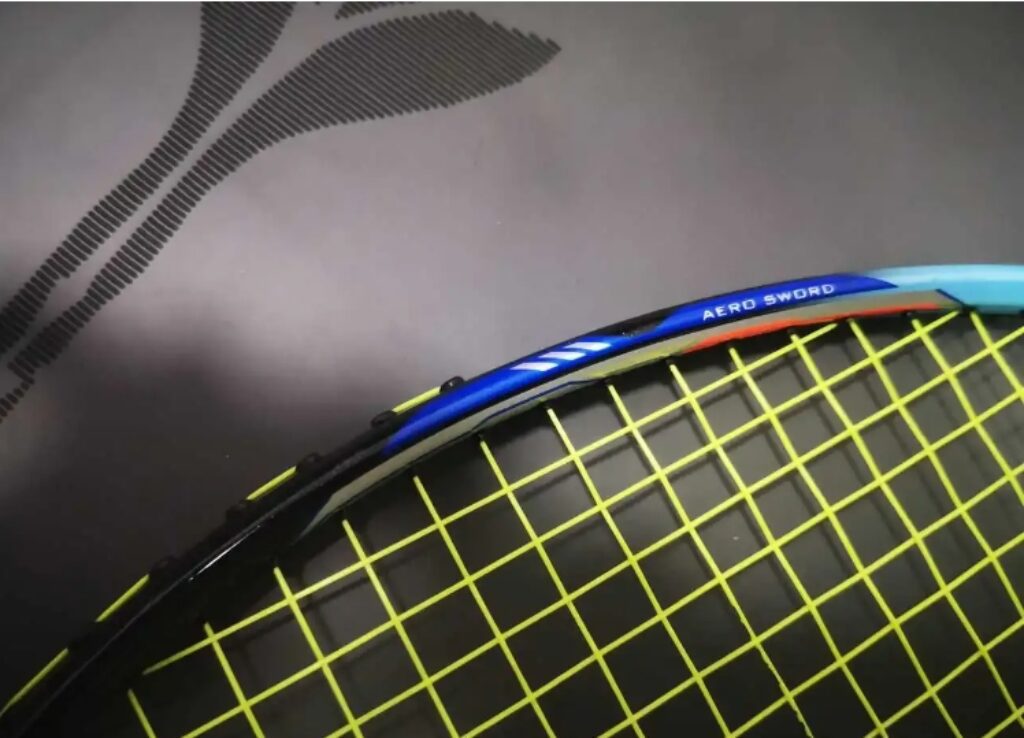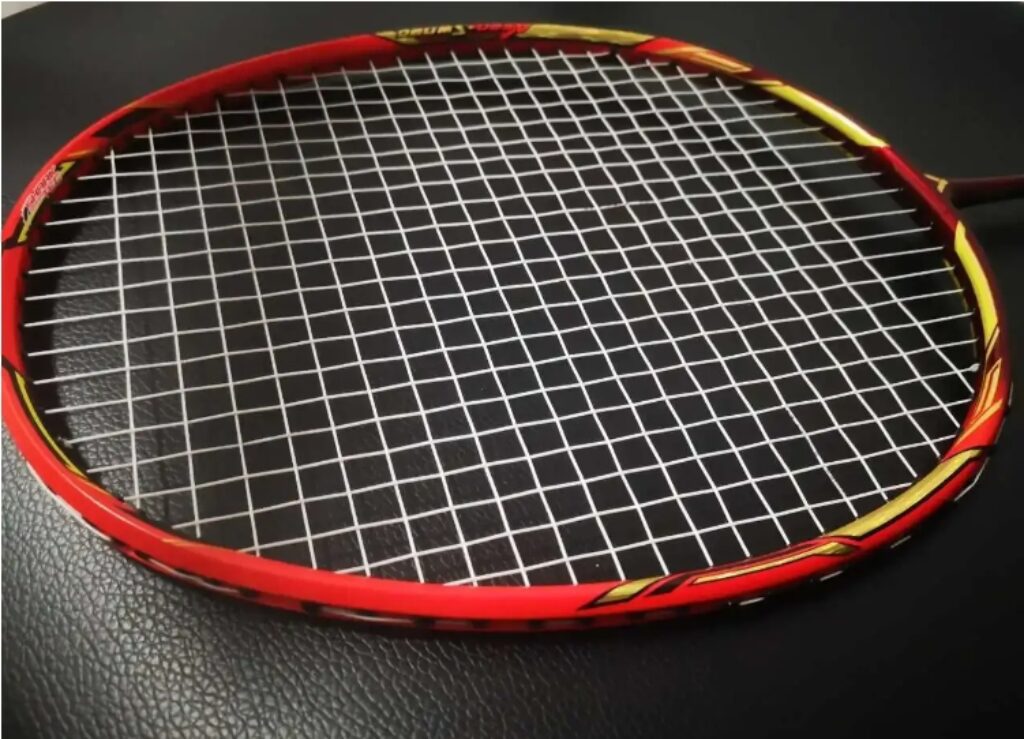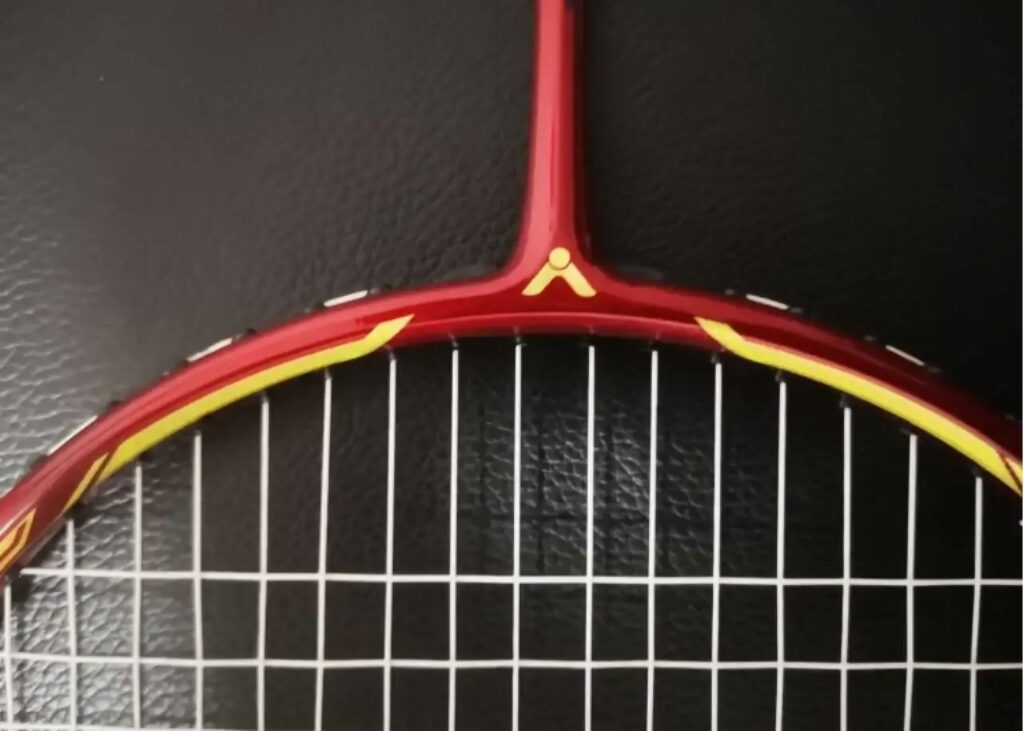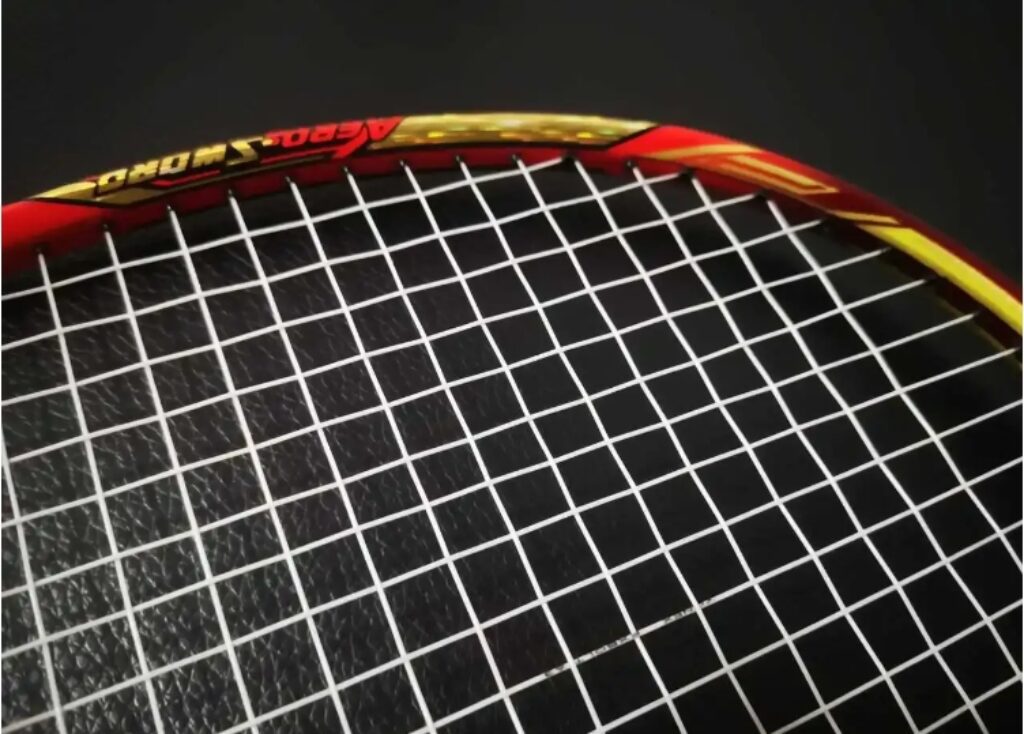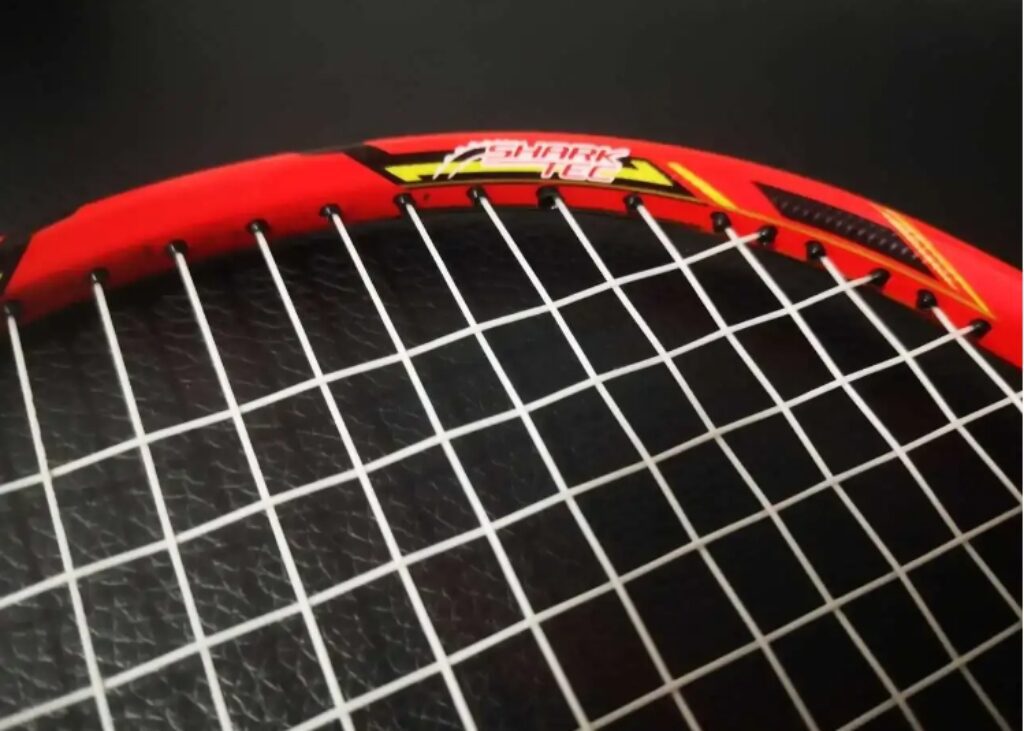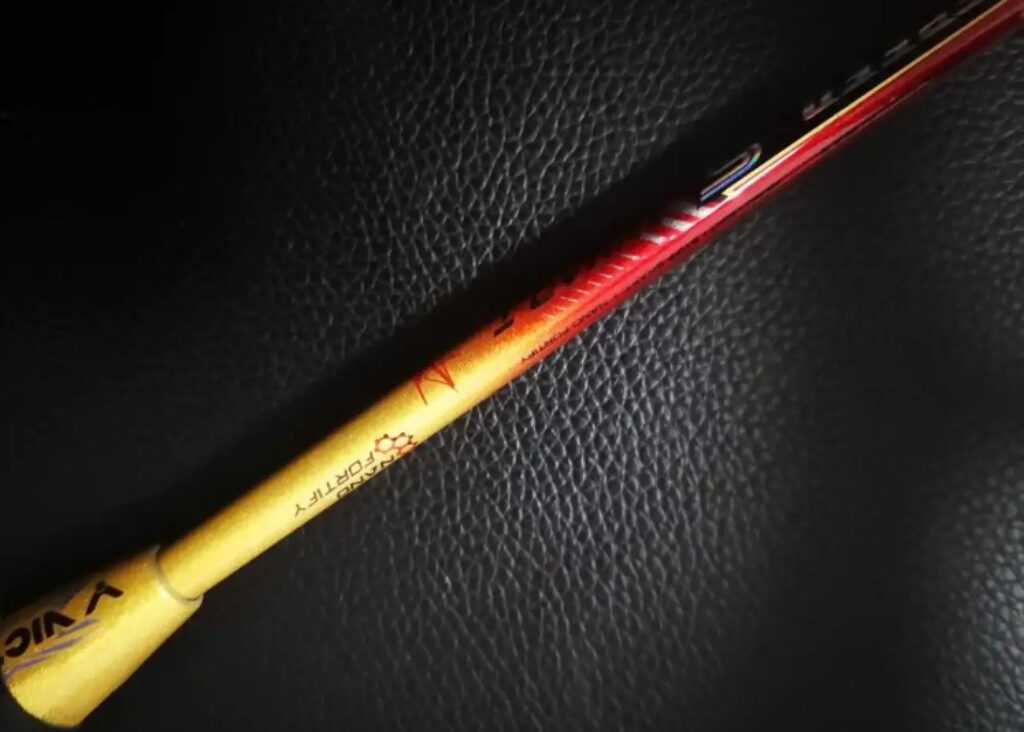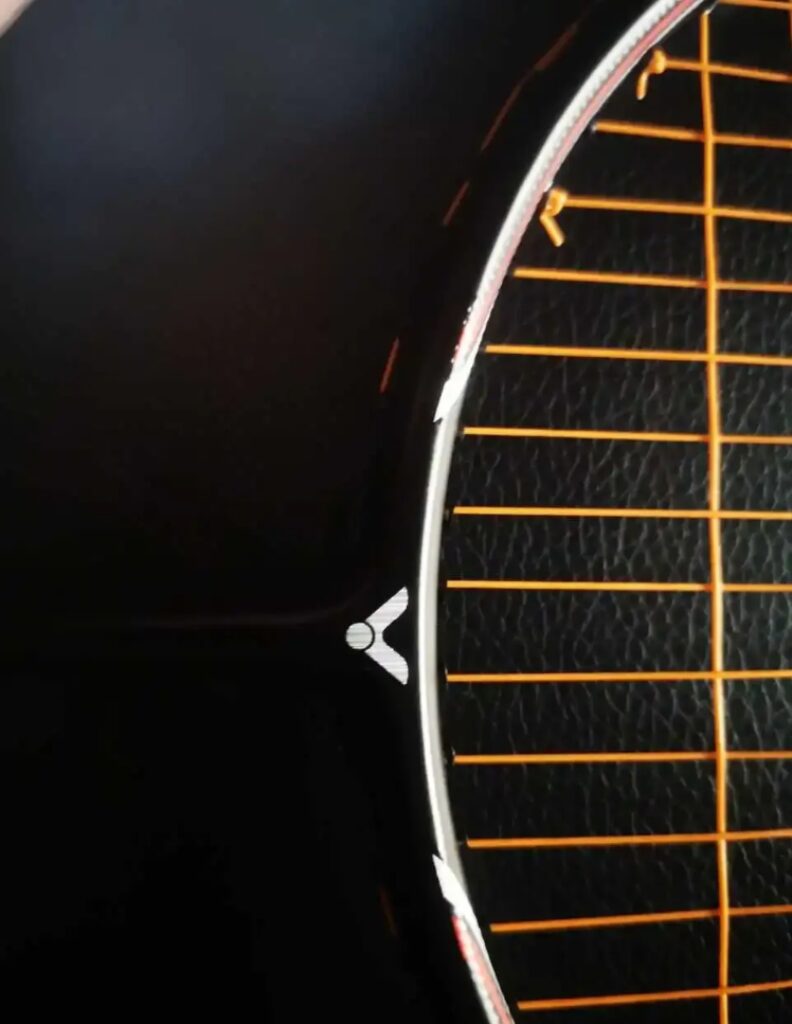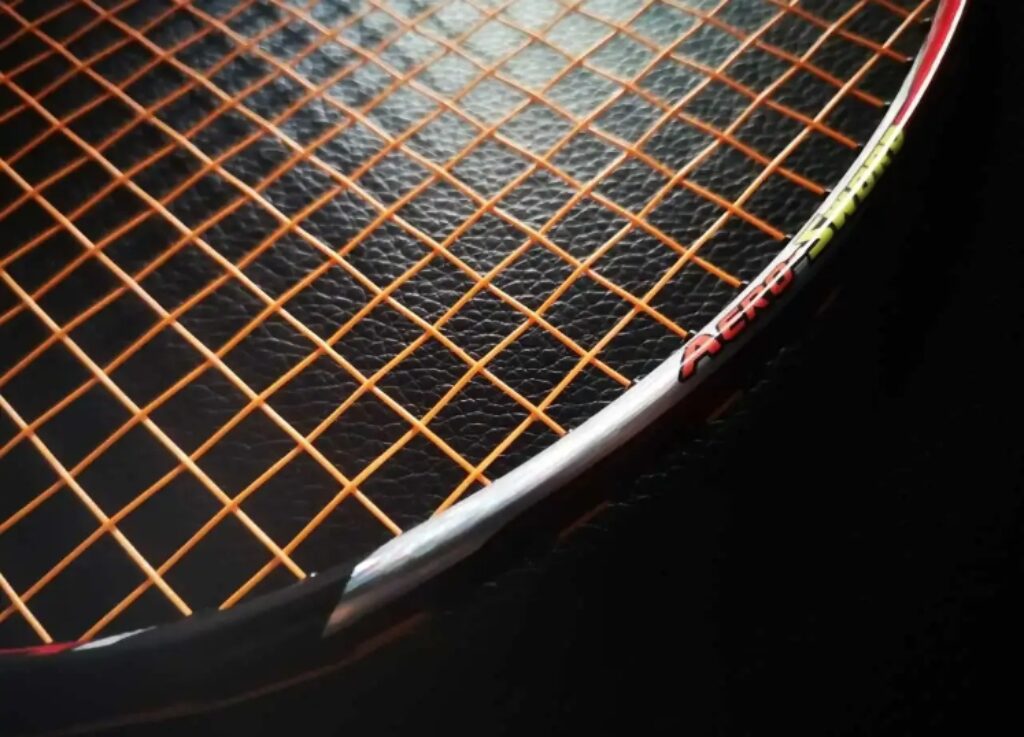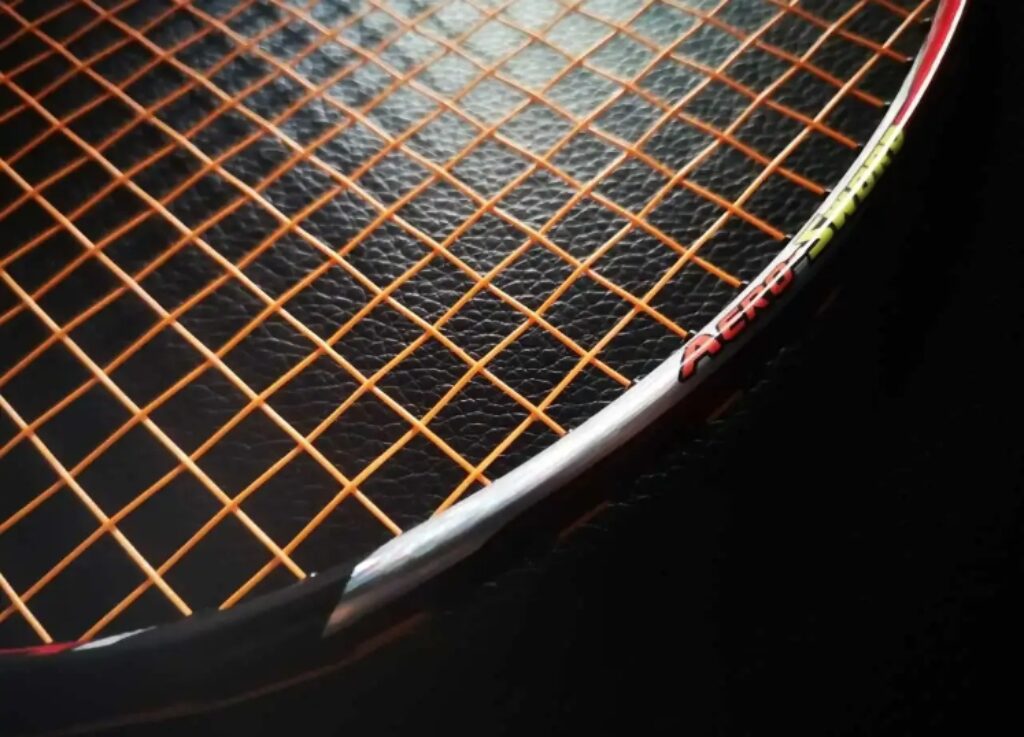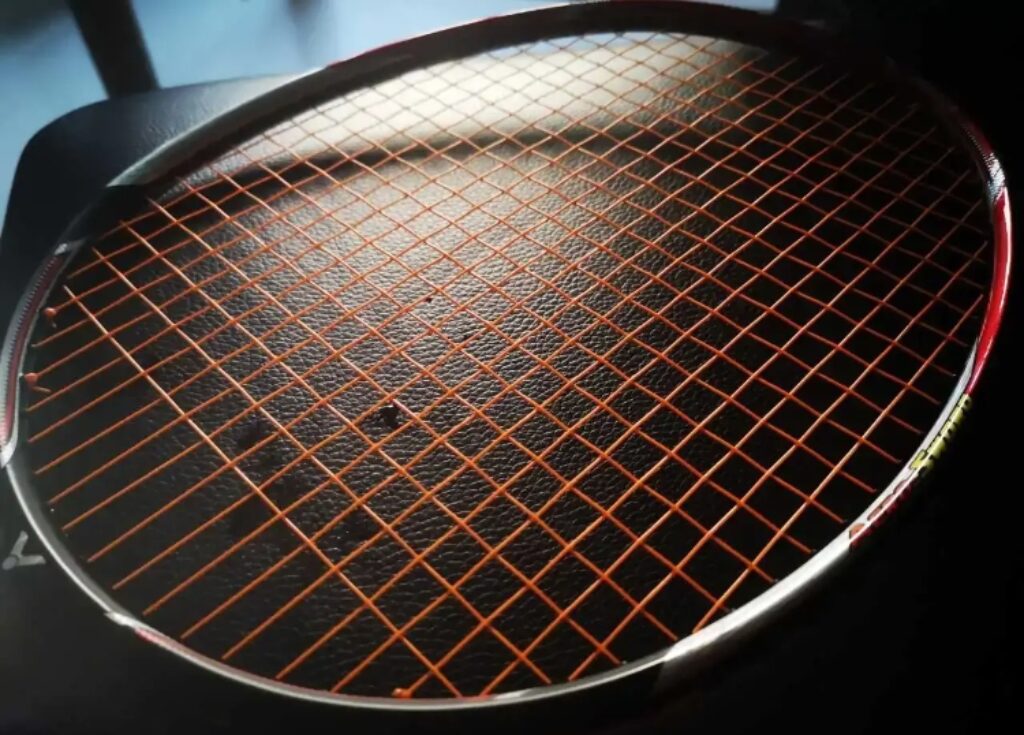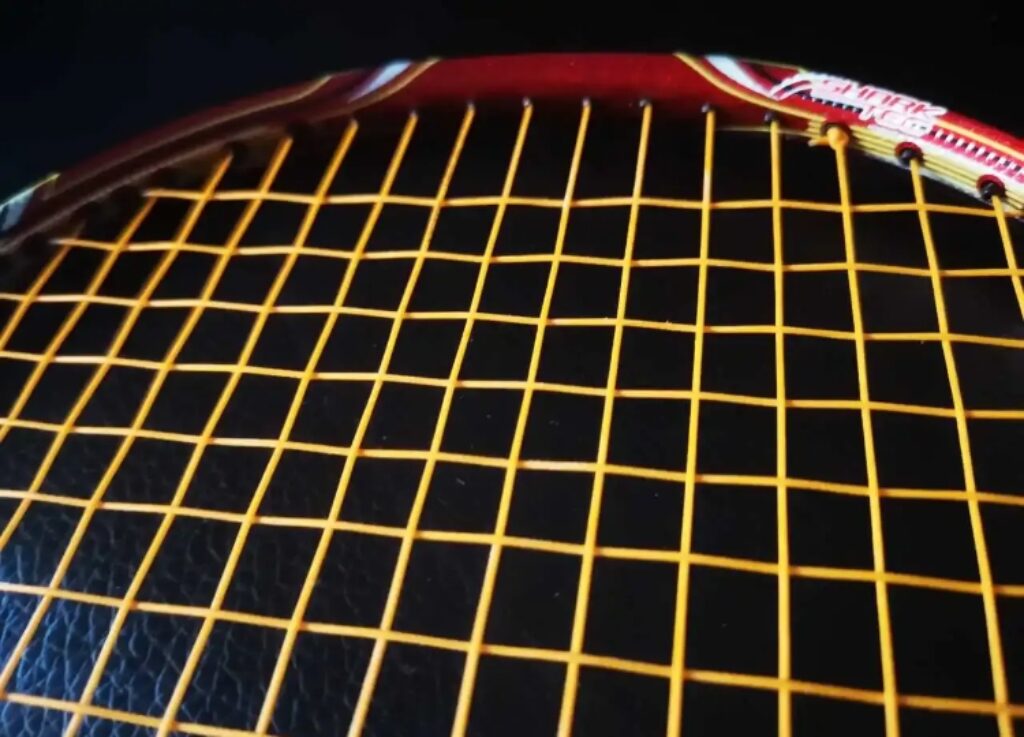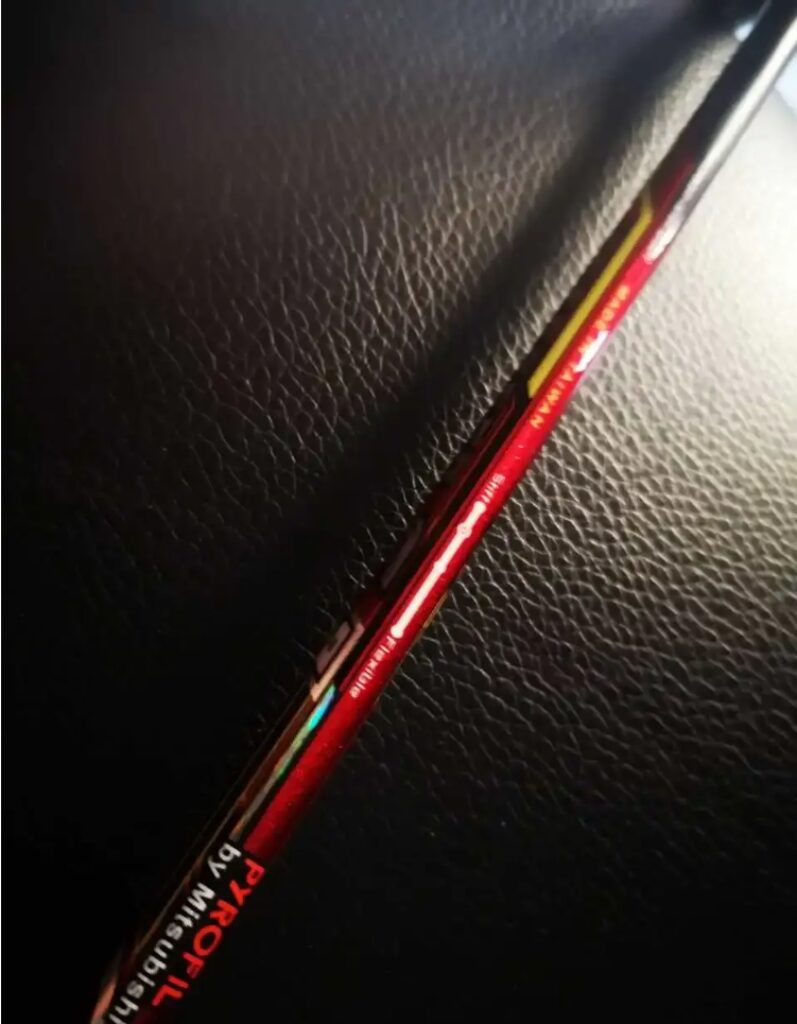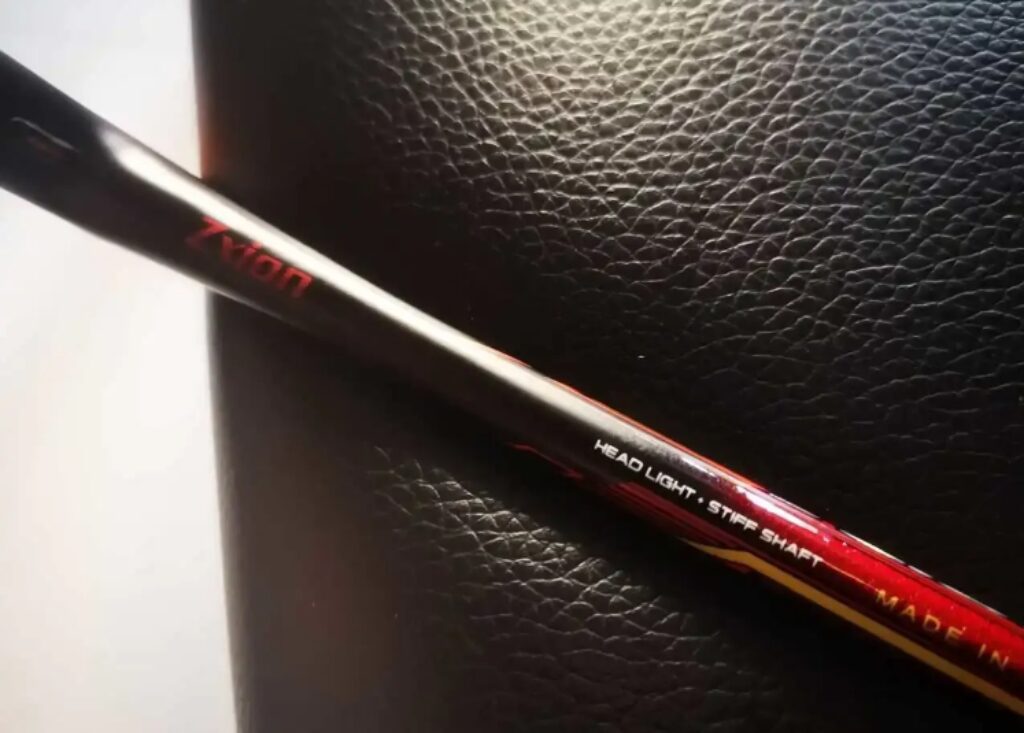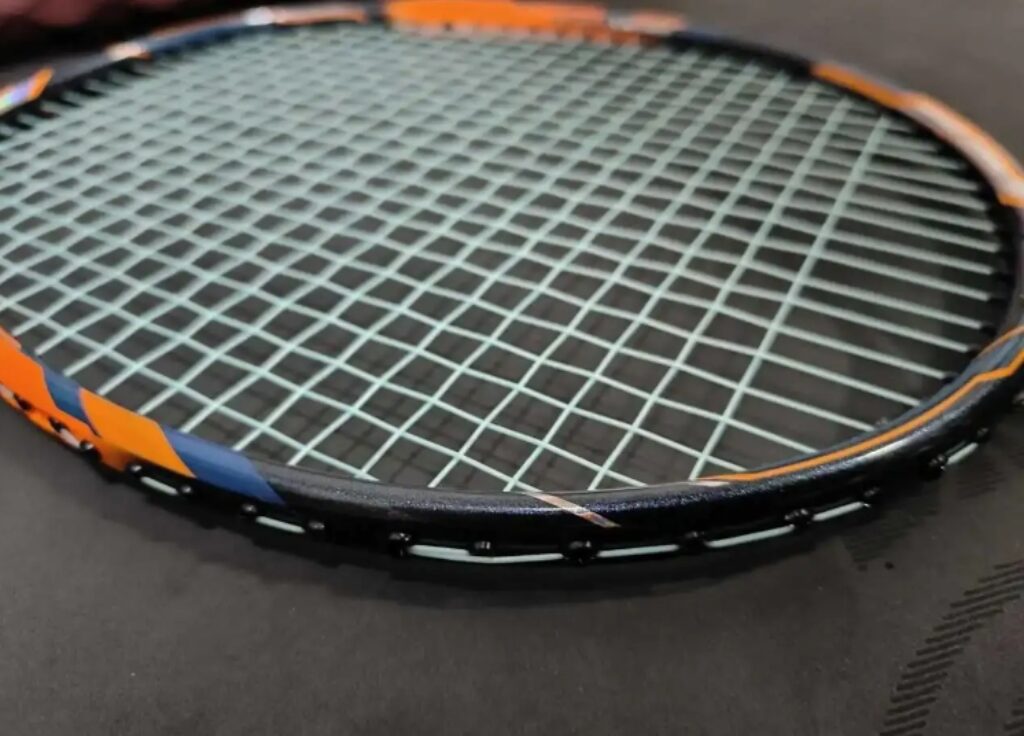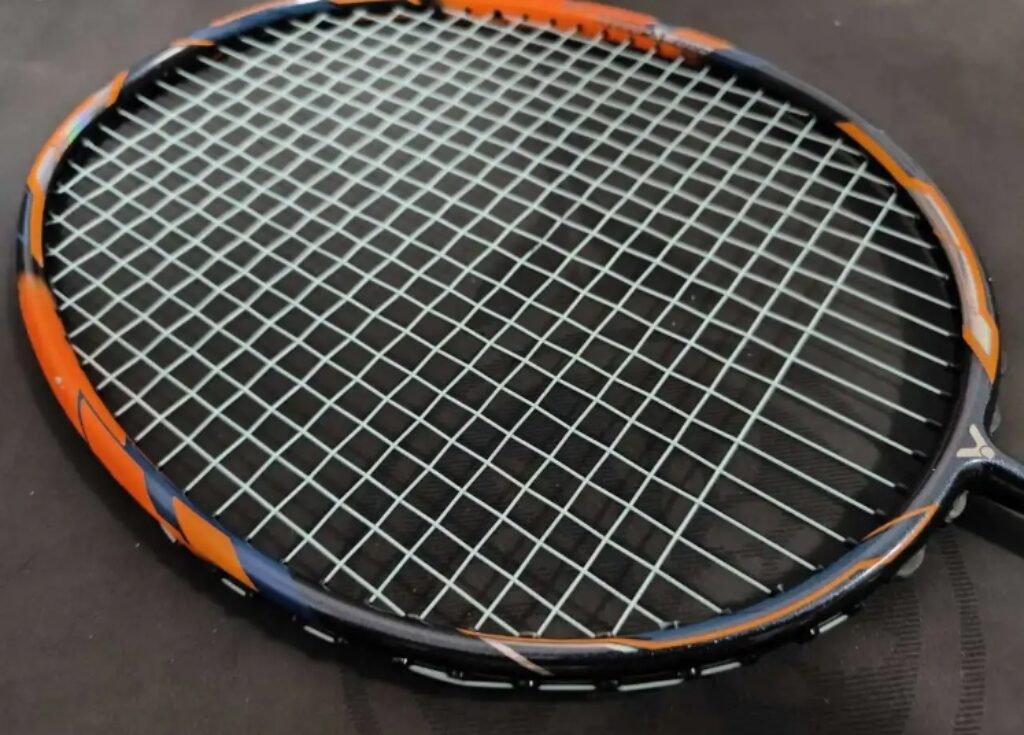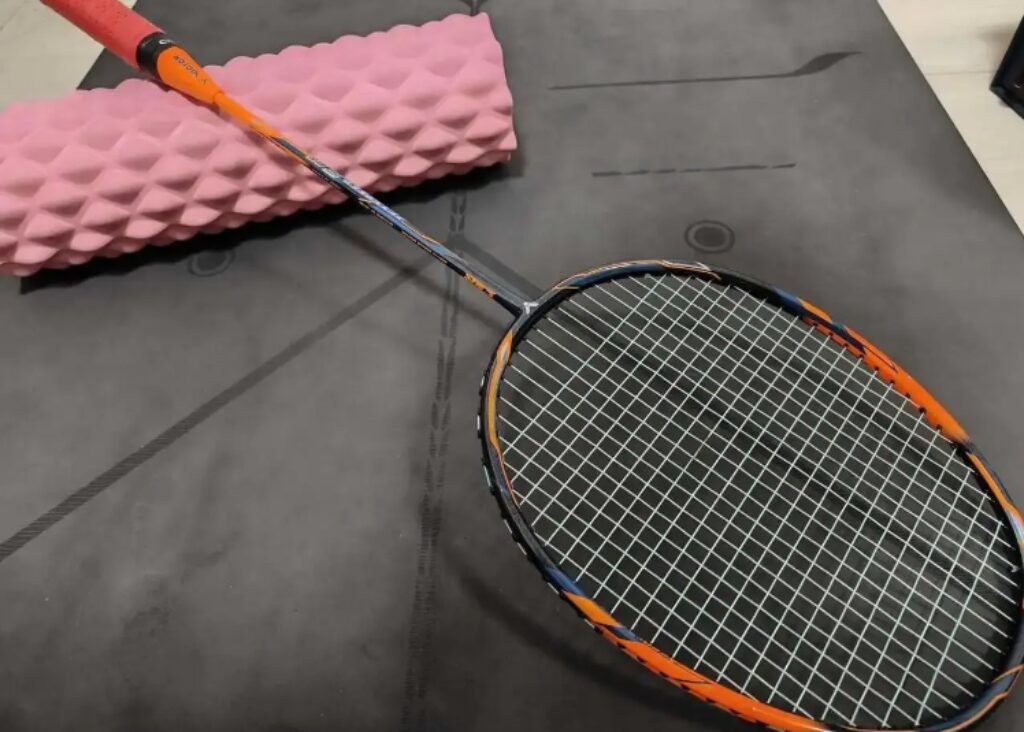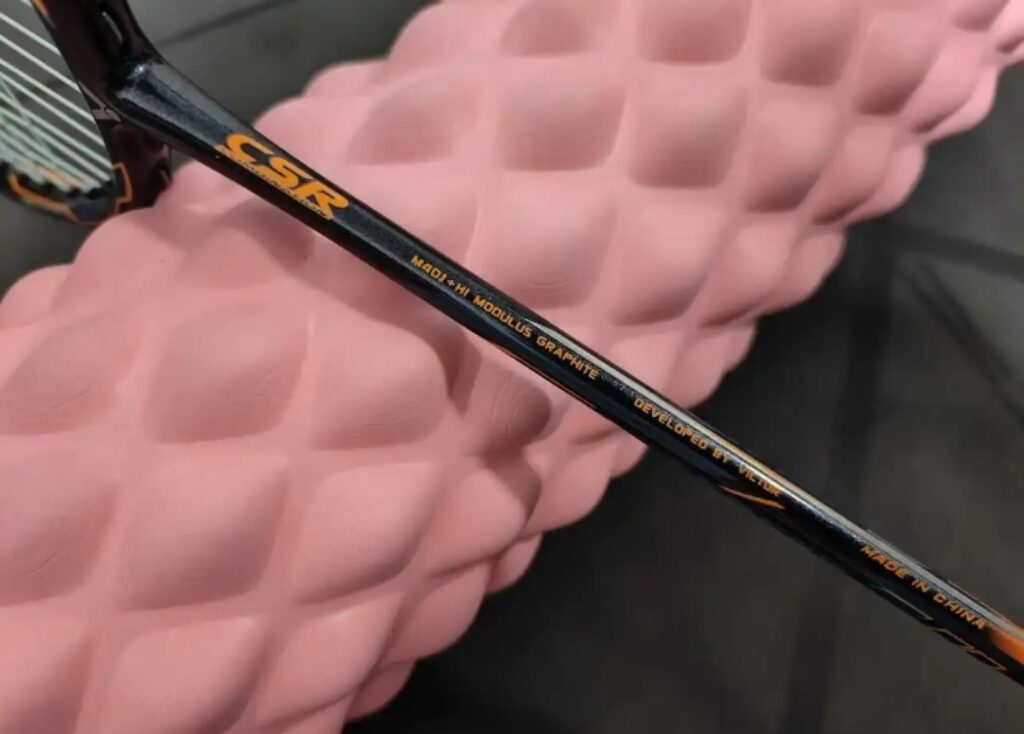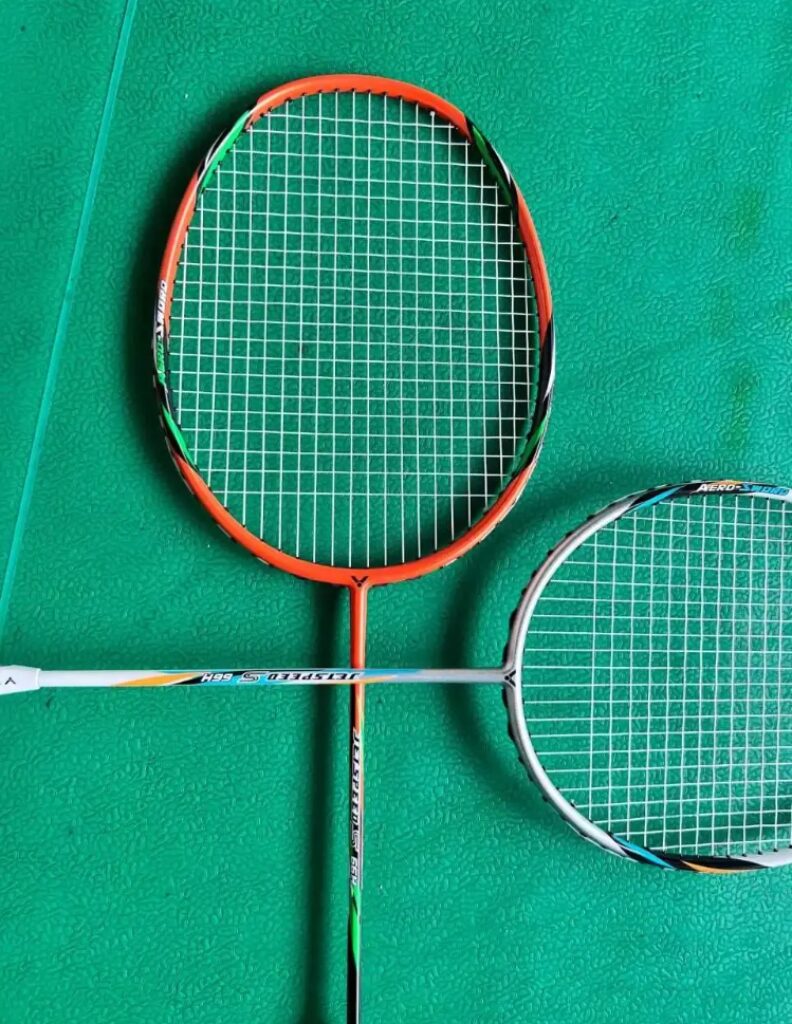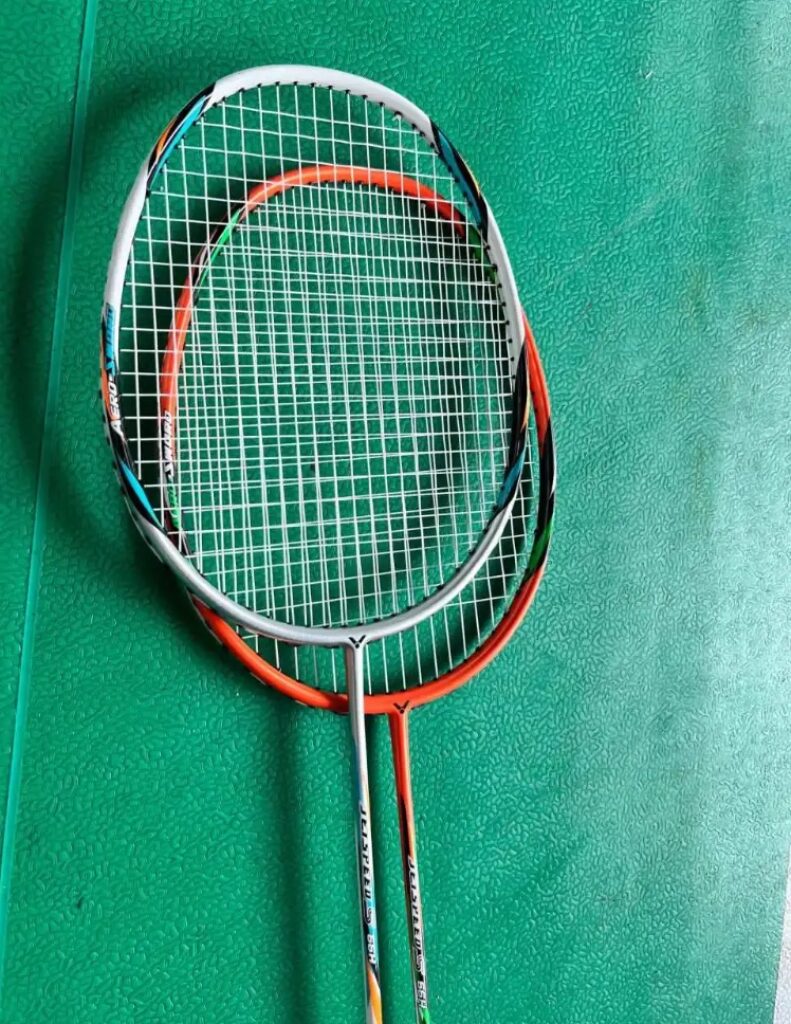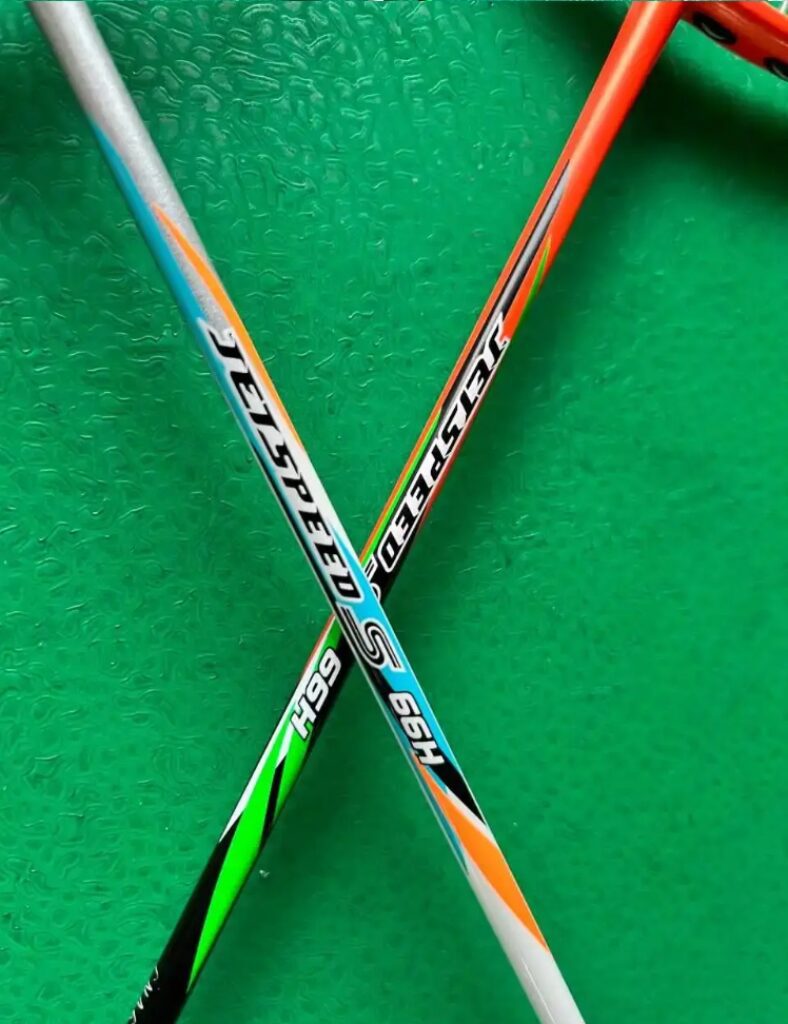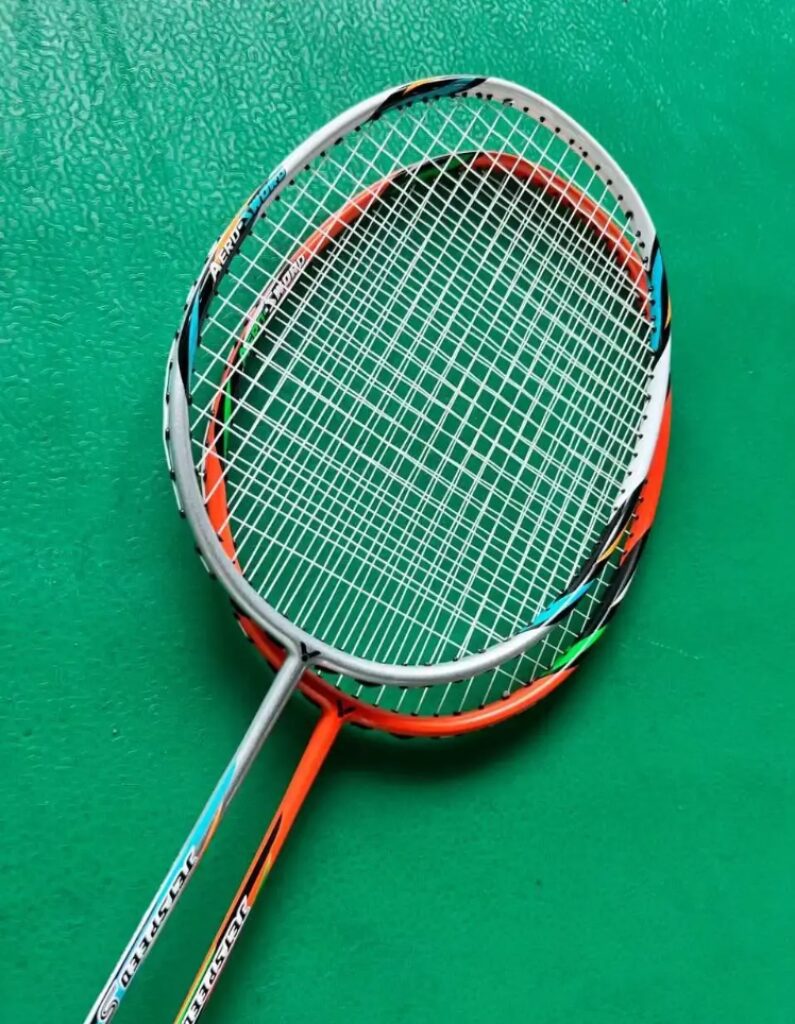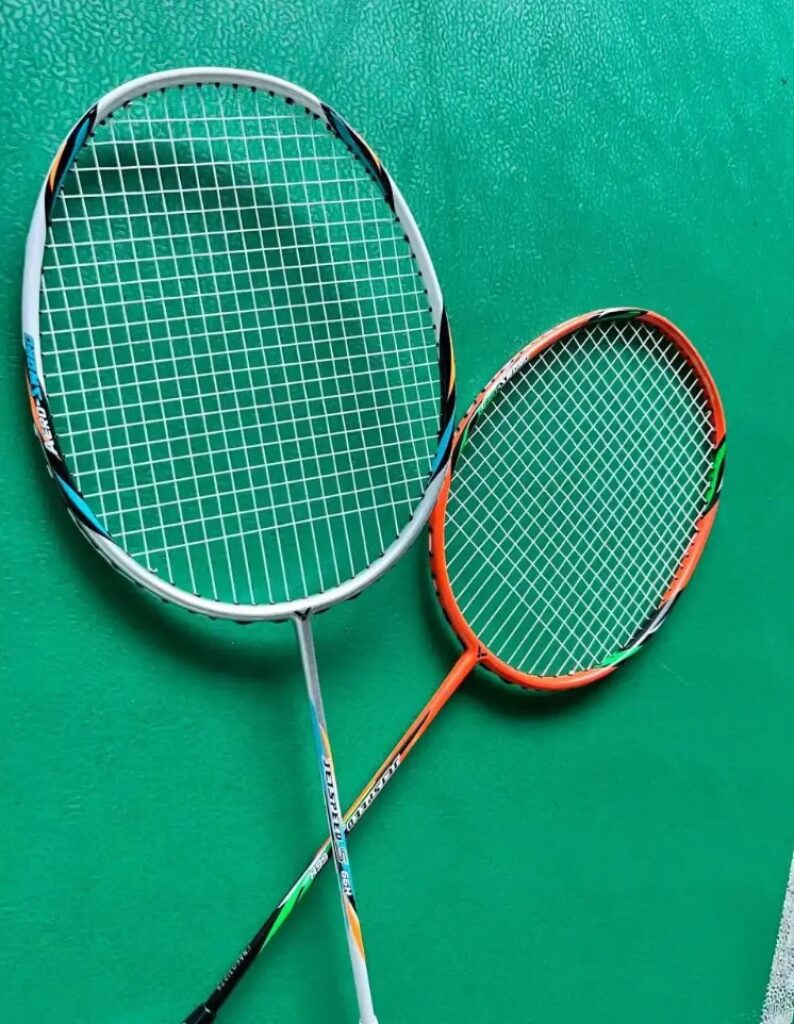This is the second entry in the Liangjian series. Released over a decade ago, it witnessed the heyday of the Korean team, so the version with the BKA small wing is even more popular.
Its swing speed and frame shape are indeed classic. This classic can be verified from the introduction of this racket in the equipment library, especially as it has been used by various professional players including Li Daochang, Zheng Daxu, and Ma Huang, covering male and female players and both singles and doubles events.
However, whether the Liangjian 11 or Liangjian 12 is still a viable racket today needs to be tested.

Parameters: 4UG5, with a base, used condition total weight 92.0g, balance point 294mm, 7.0mm shaft, length 220mm, hard feel, diamond wind-breaking frame, 72-hole string bed, 9—3 o’clock string grooves, warranty 26/28 lbs, stringing 26 lbs with generic strings.
The Liangjian frame is quite delicate. A small chip of paint can be seen after hitting the ball, and the excessively sharp edges cause a smaller contact area with more pressure upon impact, which results in significant wear on the sample in my possession. In terms of color, it reminds me of the JetSpeed 9 and Challenger 9500, with the same black, white, and red color scheme, which looks rather ordinary by today’s standards. It’s worth noting that the hardness markings on the racket vary by version: TW is softer, while CN is harder.
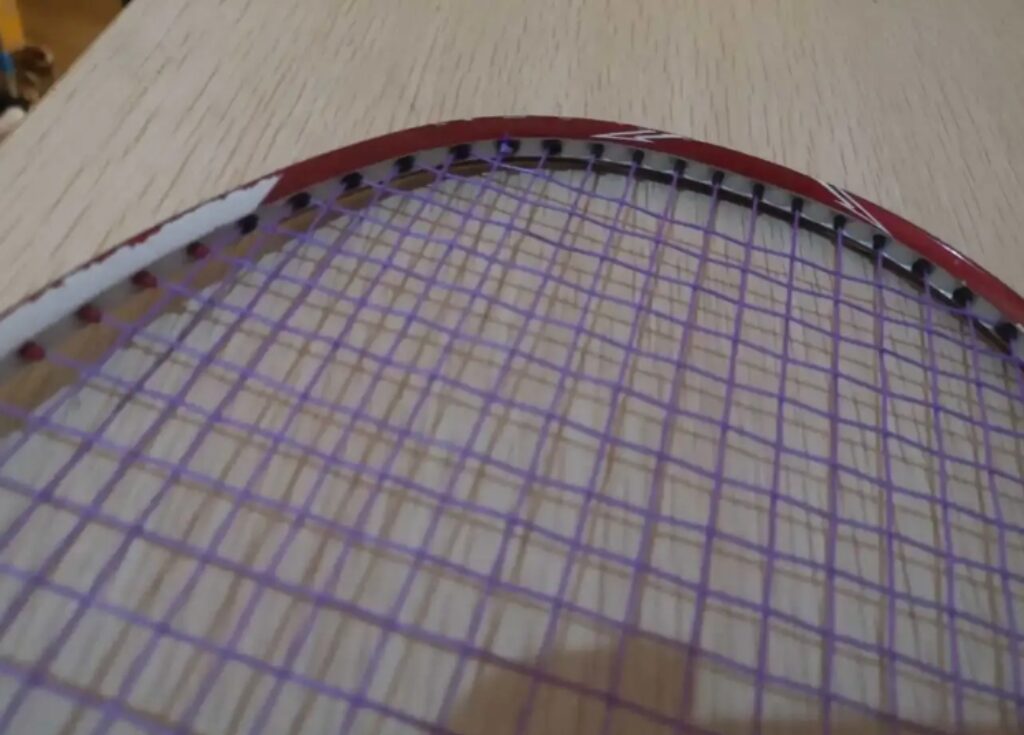
I haven’t experienced the sharp, cutting wind-breaking sound of the Liangjian frame for a long time, but it returned when I started swinging it. When first handling it, it doesn’t feel like a 4U racket; the weight is quite substantial, which is the most puzzling aspect to me—how does a 4U racket with a base and strings achieve such a full feel with a balance point of only 294mm?
The Liangjian 11’s static hardness is indeed high, with a shaft that looks considerably thicker than current rackets, possibly reaching 7.2mm after coating. Upon adapting to it, its dynamic hardness is also notable, with direct feedback and prominent frame rigidity, giving a similar feel to the Liangjian 12. This is a racket with a classic feel, but it seems somewhat outdated in terms of materials.
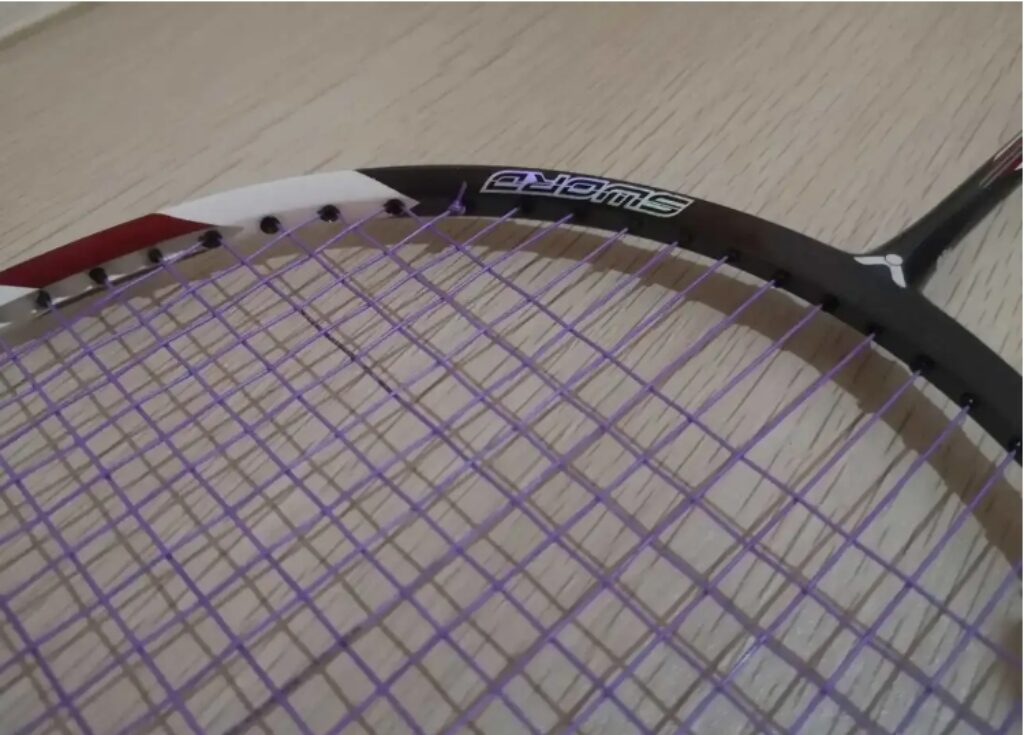
Despite this, I found adapting to the racket wasn’t particularly difficult. Its fast swing speed and long shaft provide excellent power, and the smooth swinging experience, aided by the large sweet spot of the Liangjian frame, makes handling high and defensive shots quite comfortable. However, while the frame is rigid, and the T-head features a box-shaped frame extension for better speed, it doesn’t offer corresponding precision in controlling the landing points of long shots. The diamond wind-breaking frame still has its shortcomings in torsional resistance.
Nonetheless, its swing speed remains impressive. Initially, I worried that my wife, who was used to the 5U Speed 90F, might find the Liangjian 11 too heavy, but she persisted and trained with me. She was able to handle it with decent performance. Although the feedback was somewhat stiff after numerous rallies, making her forearm sore, it’s still usable. In my own experience, the Liangjian 11 is more suited for fast-paced flat drives and net play rather than singles. At least, it is competent for handling shots in the front and middle court for players at my level.
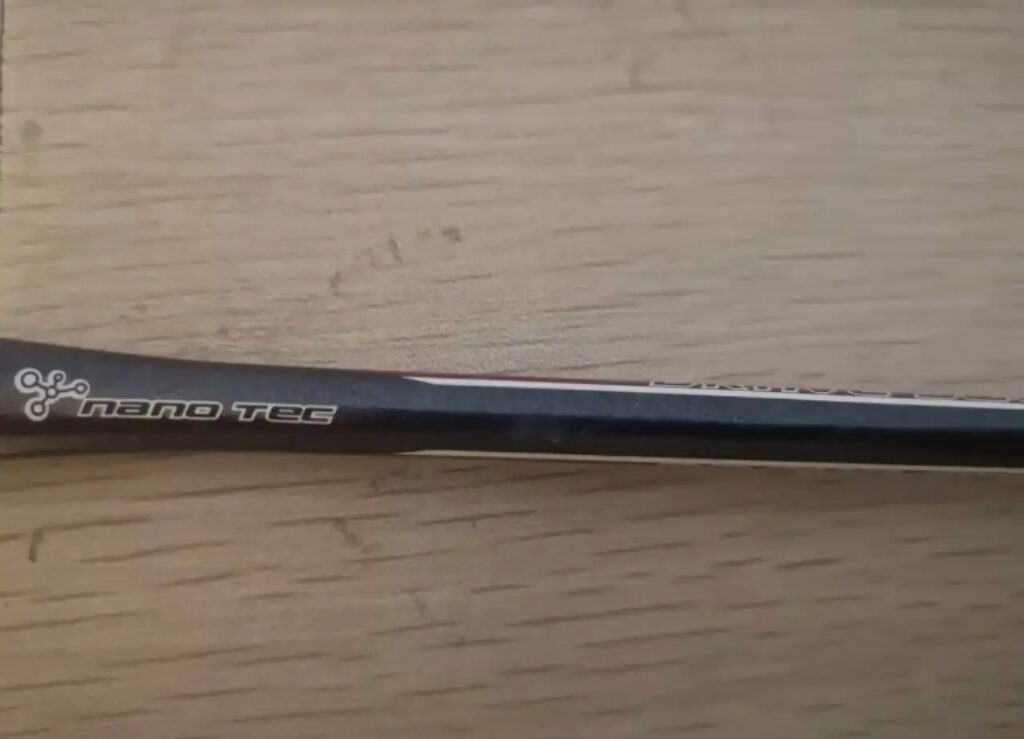
Of course, it requires some adaptation in downward shots due to its head-heaviness. Initially, when facing excellent front-to-back court opportunities, there were awkward moments where powerful shots went out of bounds because the shot trajectory wasn’t controlled well. This could be resolved by adjusting the timing of the swing. The heavy smashes feel good and the speed is there, but the shaft’s elasticity lags behind. Compared to the Speed 100X, which increases speed with better elasticity, the Liangjian 11’s shot speed has decreased, making it easier to defend against. Thus, offensive strategies should focus on leveraging the Liangjian 11’s advantages in continuity.
Its low swing weight and high frame rigidity provide good instant power and fast initial shot speed, giving it a sharp and sudden striking experience. For well-placed attacks or counterattacks, a well-executed strike can often score or create scoring opportunities.
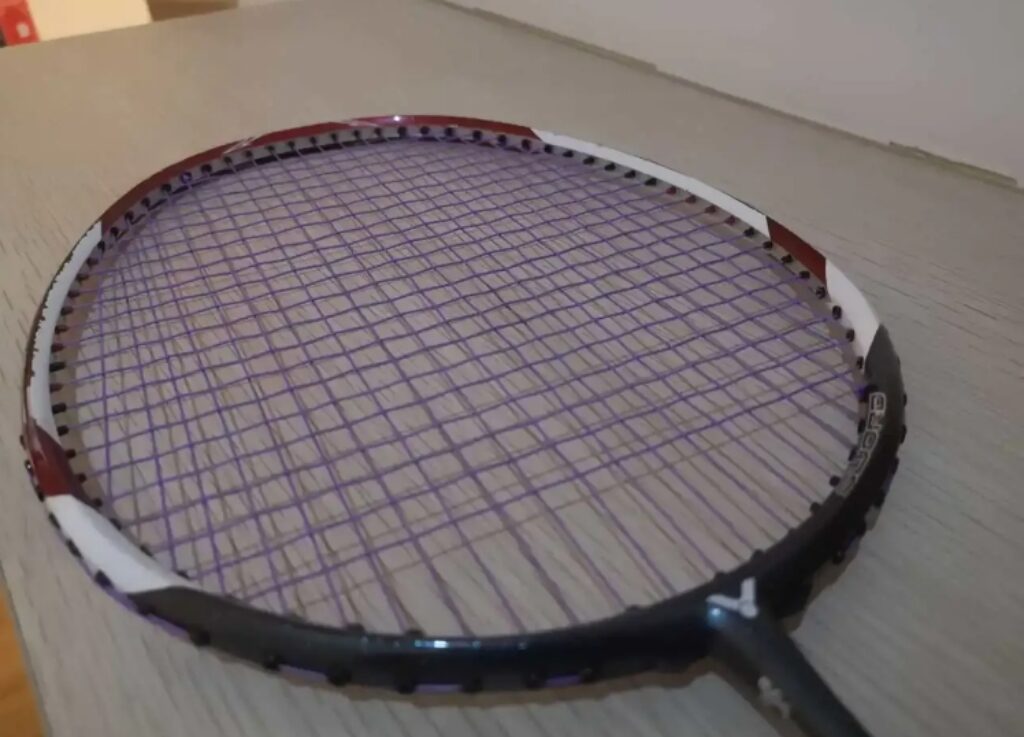
The racket also has a good tolerance level. It provides clear feedback during high and flick shots in the backcourt, with a low error rate, and handles various smashes quite adeptly. This feeling reminds me of Li Xuanyi’s graceful footwork, smooth shots, and seemingly non-aggressive playing style, akin to a deceptive move.
However, I must say that using the Liangjian 11 resulted in a very low win rate. The racket’s feel gave me excessive confidence, leading to unreasonably high expectations for my shots and resulting in many forced errors. The most memorable instance was in the decisive set of a singles match, where I had four match points but was overturned, making three errors on service returns and net play. It was my own fault.
This makes the Liangjian 11 a racket worth long-term adaptation and main use, though its outdated shaft often leads to disappointment. It is a contradiction between being outdated and having no significant weaknesses.
